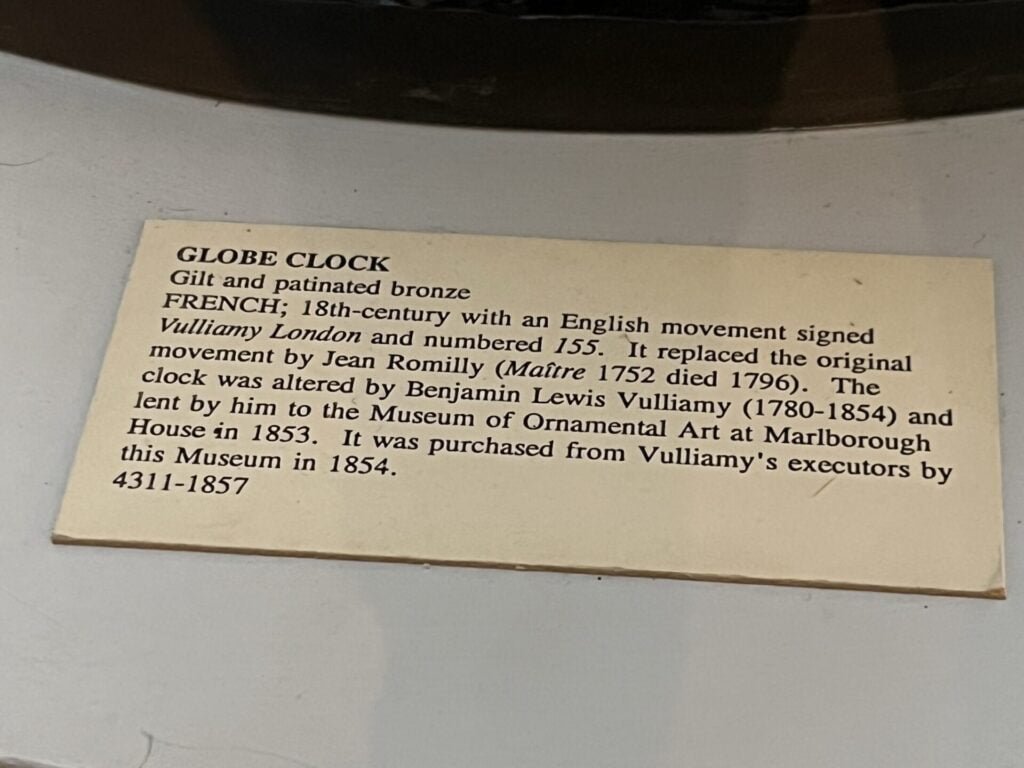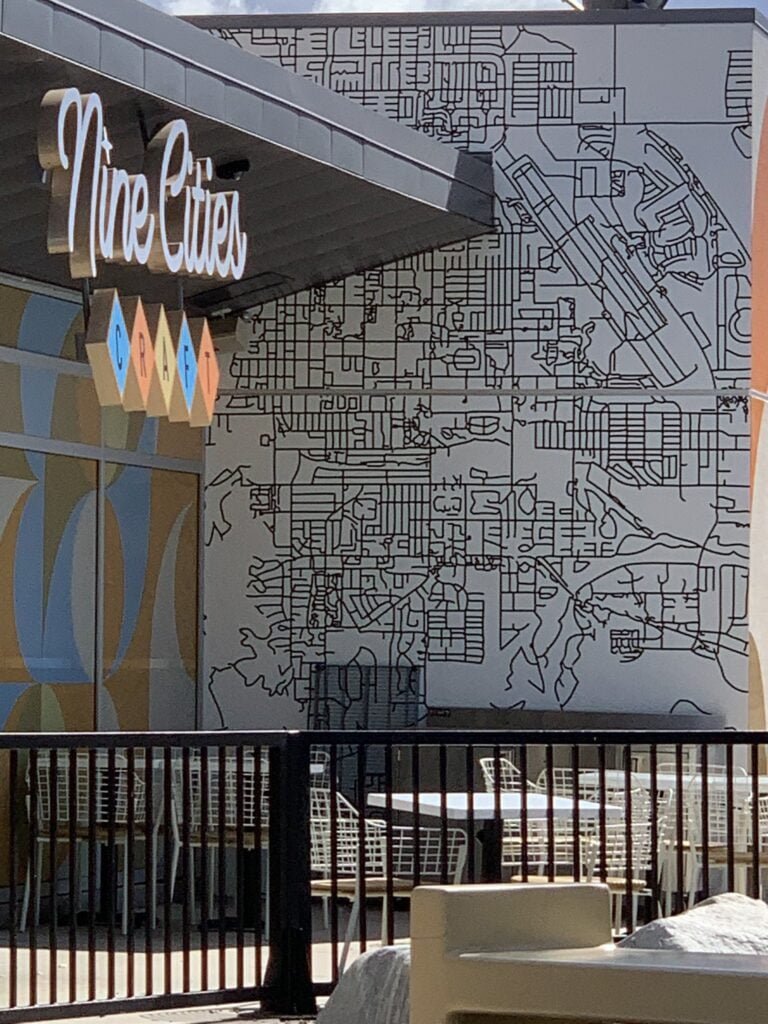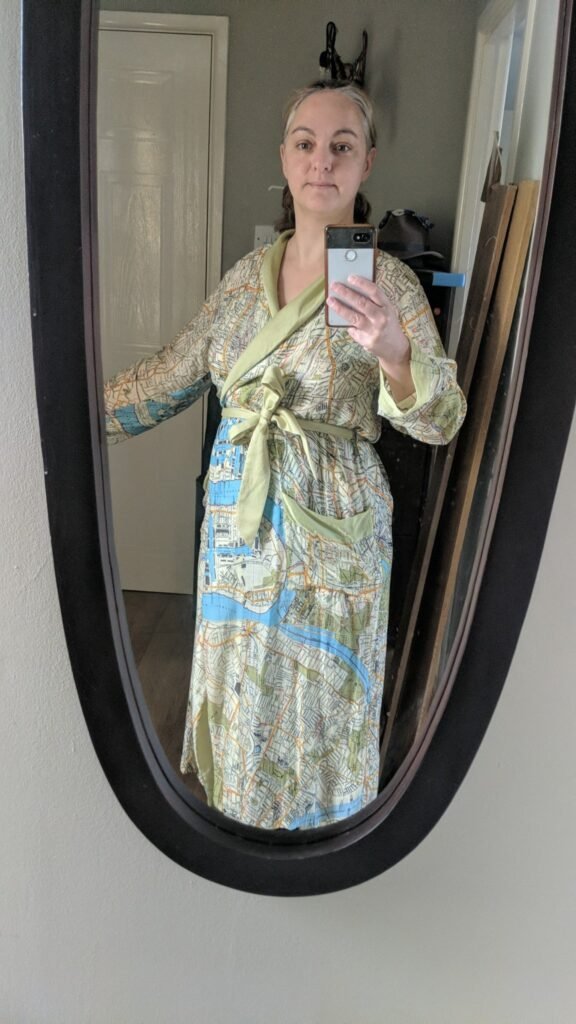Vous pouvez lire le billet sur le blog La Minute pour plus d'informations sur les RSS !
Canaux
3165 éléments (4 non lus) dans 55 canaux
 Du côté des éditeurs
(1 non lus)
Du côté des éditeurs
(1 non lus)
 Toile géomatique francophone
(3 non lus)
Toile géomatique francophone
(3 non lus)
 Géomatique anglophone
Géomatique anglophone
-
sur Oslandia: New release for QField : 3.3 “Darién”
Publié: 14 June 2024, 3:10pm CEST
Oslandia is the main partner of OPENGIS.ch around QField. We are proud today to forward the announcement of the new QField release 3.3 “Darién”. This release introduces a brand new plugin framework that empowers users to customize and add completely new functionalities to their favourite field application.
The plugin framework comes with other new features and improvements for this release, detailed below.
Main highlights
One of the biggest feature additions of this version is a brand new drawing tool that allows users to sketch out important details over captured photos or annotate drawing templates. This was a highly requested feature, which is brought to all supported platforms (Android, iOS, Windows, macOS, and, of course, Linux) with the financial support of the Swiss QGIS user group.
Also landing in this version is support for copying and pasting vector features into and from the clipboard. This comes in handy in multiple ways, from providing a quick and easy way to transfer attributes from one feature to another through matching field names to pasting the details of a captured feature in the field into a third-party messenger, word editing, or email application. Copying and pasting features can be done through the feature form’s menu as well as long pressed over the map canvas. Moreover, a new feature-to-feature attributes transfer shortcut has also been added to the feature form’s menu. Appreciation to Switzerland, Canton of Lucerne, Environment and Energy for providing the funds for this feature.

The feature form continues to gain more functionalities; in this version, the feature form’s value map editor widget has gained a new toggle button interface that can help fasten data entry. The interface replaces the traditional combo box with a series of toggle buttons, lowering the number of taps required to pick a value. The German Archaeological Institut – KulturGutRetter sponsored this feature.
Other improvements in the feature form include support for value relation item grouping and respect for the vector layer attributes’ « reuse last entered value » setting.

Finally, additional features include support for image decoration overlay, a new interface to hop through cameras (front, back, and external devices) for the ‘non-native’ camera, the possibility to disable the 3-finger map rotation gesture, and much more.
User experience improvementsLong-time users of QField will notice the new version restyling of the information panels such as GNSS positioning, navigation, elevation profile, and sensor data. The information is now presented as an overlay sitting on top of the map canvas, which increases the map canvas’ visibility while also achieving better focus and clarity on the provided details. With this new version, all details, including altitude and distance to destination, respect user-configured project distance unit type.
The dashboard’s legend has also received some attention. You can now toggle the visibility of any layer via a quick tap on a new eye icon sitting in the legend tree itself. Similarly, legend groups can be expanded and collapsed directly for the tree. This also permits you to show or hide layers while digitizing a feature, something which was not possible until now. The development of these improvements was supported by Gispo and sponsored by the National Land Survey of Finland.
Plugin frameworkQField 3.3 introduces a brand new plugin framework using Qt’s powerful QML and JavaScript engine. With a few lines of code, plugins can be written to tweak QField’s behaviour and add new capabilities. Two types of plugins are possible: app-wide plugins as well as project-scoped plugins. To ensure maximum ease of deployment, plugin distribution has been made possible through QFieldCloud! Amsa provided the financial contribution that brought this project to life.

Our partner OPENGIS.ch will soon offer a webinar to discover how QField plugins can help your field (and business) workflows by allowing you to be even more efficient in the field.
Users interested in authoring plugins or better understanding the framework, can already visit the dedicated documentation page and a sample plugin implementation sporting a weather forecast integration.
A question concerning QField ? Interested in QField deployment ? Do not hesitate to contact Oslandia to discuss your project !
-
sur Mappery: Babelroth anno 1776
Publié: 14 June 2024, 11:00am CEST
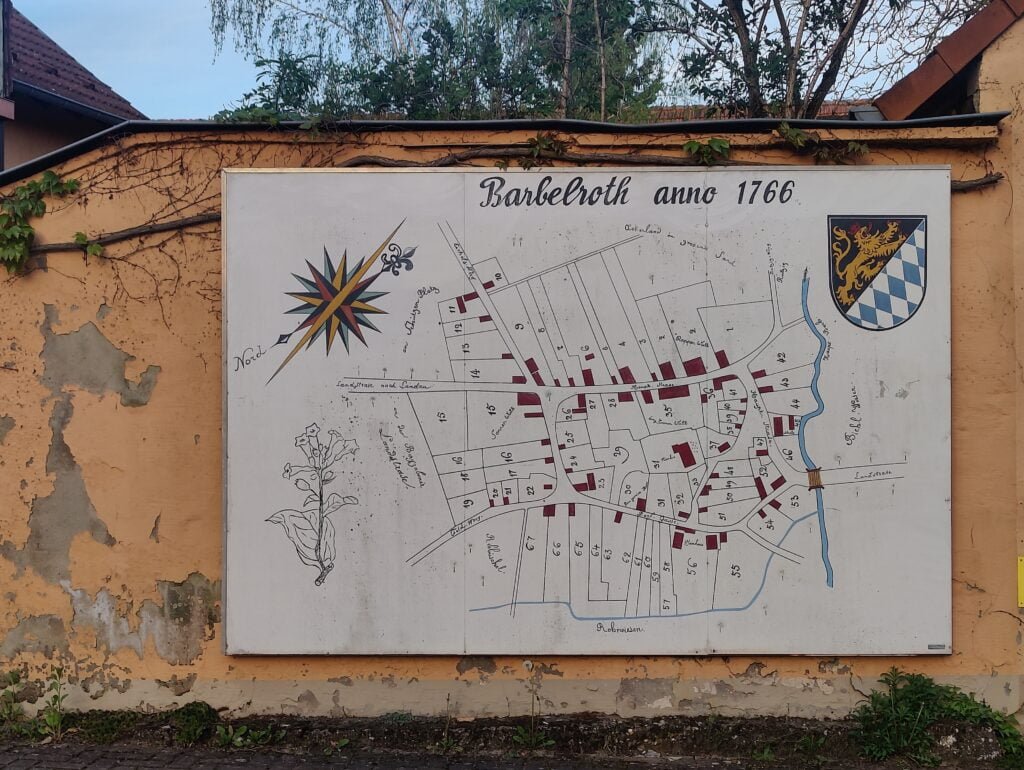
Ekki Plicht sent us this pic from Babelroth in Germany
“Here is a nice mural which can be seen in the village of Barbelroth in
Germany. It is mounted on the wall at the corner of Hauptstraße and
Mühlstraße, and it is already mapped in OSM, object. [https:]]Cheers.
Ekki”MapsintheWild Babelroth anno 1776
-
sur The New Medieval Map of London
Publié: 14 June 2024, 10:23am CEST par Keir Clarke
The Historic Towns Trust has created a modern map of Medieval London. The map depicts London as it existed at the end of the 13th Century using modern mapping techniques. The map is based on archaeological and historical records. You can explore an interactive version of the Medieval London map on Layers of London (check the 'Use this overlay' box and then zoom in on the City of
-
sur QGIS Blog: QGIS Grant Programme 2024 Update no. 2
Publié: 14 June 2024, 8:30am CEST
Thanks to generous supporters, we are in the wonderful position to be able to announce that another project is successfully funded:
Our thanks go out to:
- Gis3W
- QTIBIA Engineering and QCooperative
- QGIS User Group Germany (QGIS Anwendergruppe Deutschland e.V.)
- Hytech-imaging spectral imaging for environmental mapping and monitoring in civil and defence applications
for providing the additional funding to top up the QGIS Grant Programme contribution for QEP#248.
The next proposals on the wait list are:
- QEP#294 Fix access to remote data sources in WebAssembly builds
- QEP#265 Use pre-commit to automate installation and management of all pre-commit hooks
- QEP#295 Embedded end-user feedback
If you want to help make these improvement a reality, please get in touch.
-
sur OPENGIS.ch: Django Full-Stack Engineer with DevOps Affinity – 80 – 100% (Remote)
Publié: 14 June 2024, 6:47am CEST
Location: Remote, preferably with at least 4h overlap to CEST office hours
Employment Type: Full-time (80-100%)

About OPENGIS.ch:
OPENGIS.ch is a team of Full-Stack GeoNinjas offering personalized open-source geodata solutions to Swiss and international clients. We are dedicated to using and developing open-source tools, providing flexibility, scalability, and future-proof solutions, and playing a key role in the free and open-source geospatial community. We pride ourselves on our agile and distributed nature, which allows us to have a motivated and multicultural team that supports each other in working together.
Job Description:
We are seeking a passionate and skilled Django Full-Stack Engineer with a strong affinity for DevOps to join our team. The ideal candidate will work primarily on QFieldCloud, our cutting-edge cloud-based solution that brings QGIS projects to the field. You will help develop and maintain the full stack of the QFieldCloud platform, ensuring high performance and stability and implementing new features.
Responsibilities:
- Develop, test, and maintain the QFieldCloud platform using Django, Python, PostgreSQL and other modern web technologies.
- Collaborate with cross-functional teams to define, design, and ship new features.
- Ensure the performance, quality, and responsiveness of the application.
- Identify and correct bottlenecks and fix bugs.
- Help maintain code quality, organization, and automation.
- Work closely with the DevOps team to manage and optimize deployment pipelines, including Docker, Kubernetes, and other containerization and orchestration technologies.
- Provide technical guidance and support to clients regarding deployment and usage of the platform.
Qualifications:
- Strong experience with Django and Python in a full-stack capacity.
- Proficiency in front-end technologies, including JavaScript, HTML5, and CSS3.
- Experience with Linux, Docker (compose), K8s, Git, and PostgreSQL.
- Familiarity with geospatial concepts and web GIS applications is a plus.
- Good understanding of software deployment, containerization, and continuous integration practices.
- Excellent problem-solving skills and ability to work independently.
- Strong communication skills and ability to work in a distributed team environment.
- Fluency in English; knowledge of German, French, Italian, Spanish, or Romansh is a plus.
Perks:
At OPENGIS.ch, we enjoy a variety of perks that make our work experience rewarding. Here’s what we get:
- Flexible Work Hours: We have the freedom to set our own schedules, which helps us better manage our personal and professional lives.
- Remote Work Opportunities: We can work from anywhere, giving us the flexibility to choose our work environment.
- Learning and Development: We are encouraged to grow professionally with access to training programs and workshops.
- Innovative Environment: We thrive in an atmosphere that’s at the forefront of GIS technology, which keeps our work exciting.
- Collaborative Team: We value teamwork and the exchange of ideas, making our workplace dynamic and supportive.
Questions for Applicants:
- What’s your experience with software deployment and containers?
- What is your favourite Django app? Why? Have you ever upstreamed a patch in Django or an app? if so, please provide a link to the pull request.
- What is the error in the featured image of this post?
- What did you last learn out of interest?
How to Apply:
If you are excited about this opportunity and meet the qualifications, please submit an application at opengis.ch/jobs
Join us at OPENGIS.ch and become a part of our mission to provide innovative open-source geospatial solutions!



-
sur Cable Management
Publié: 13 June 2024, 8:11pm CEST par James
One of the best parts of my iPhone 15 Pro is that it has a USB-C port on it. While I appreciate the lightning port, I have just grown so tired of having to manage so many different ports while traveling. Coupled with my iPad having USB-C and my Apple Watch having a USB-C charging cable, I went ahead and got myself an Anker 3 port USB-C charger (which has a USB-A for those times you need one) allowing me to plug in all my devices at night and just use ordinary USB-C cables.
It is all nice and clean, no longer do I have all different cables for each device. My Kindle is USB-C, my GoPro is USB-C, my battery backup is USB-C and of course my MacBook Pro. I have reduced the cables I travel with because I don’t need one for each device. I do travel with a USB-A to USB-C cable for those times where the airplane doesn’t have USB-C or in an airport or rental car but that tucks away nicely in my travel bag.

But then I just realized my AirPods Pro case is lightning.

Now I could buy a USB-C case for said AirPods, but I want to wait until September and see if there is anything new. So trusty old lightning cable goes back in the bad for now.
Update: I was asked how I charged my AirPods Pro last night, well you can use the Apple Watch charger. Works pretty well but its not a great solution long term.
-
sur Mappery: 17th C Antwerp Street Scene
Publié: 13 June 2024, 11:00am CEST

Reinder sent us this massive 17C repro of a street map of Antwerp on a hoarding. The info on the side says “art historians, developed especially for the festival and pastor of Sint-Andries, a city walk along many landmarks in the city.”
MapsintheWild 17th C Antwerp Street Scene
-
sur Mapping the Census
Publié: 13 June 2024, 8:55am CEST par Keir Clarke
percentage of 0-14 year olds Jacob Weinbren has released an interactive map which allows you to explore data from the 2021 Canadian census by location. Using the map you can view the demographic and economic make-up of towns and cities across the whole of the country using over 2,500 different census variables. The Canadian Census map colors individual building footprints based on the
-
sur Camptocamp: 3D Technology Serving Rennes Métropole's Solar Cadastre
Publié: 13 June 2024, 2:00am CEST
Pièce jointe: [télécharger]
Camptocamp put its expertise to work for the city, by developing a totally customized application, based on an extremely clear user experience. -
sur Camptocamp: 3D Technology Serving Rennes Métropole's Solar Cadastre
Publié: 13 June 2024, 2:00am CEST
Camptocamp put its expertise to work for the city, by developing a totally customized application, based on an extremely clear user experience. -
sur Mappery: Anne Hathaway’s Garden
Publié: 12 June 2024, 11:00am CEST
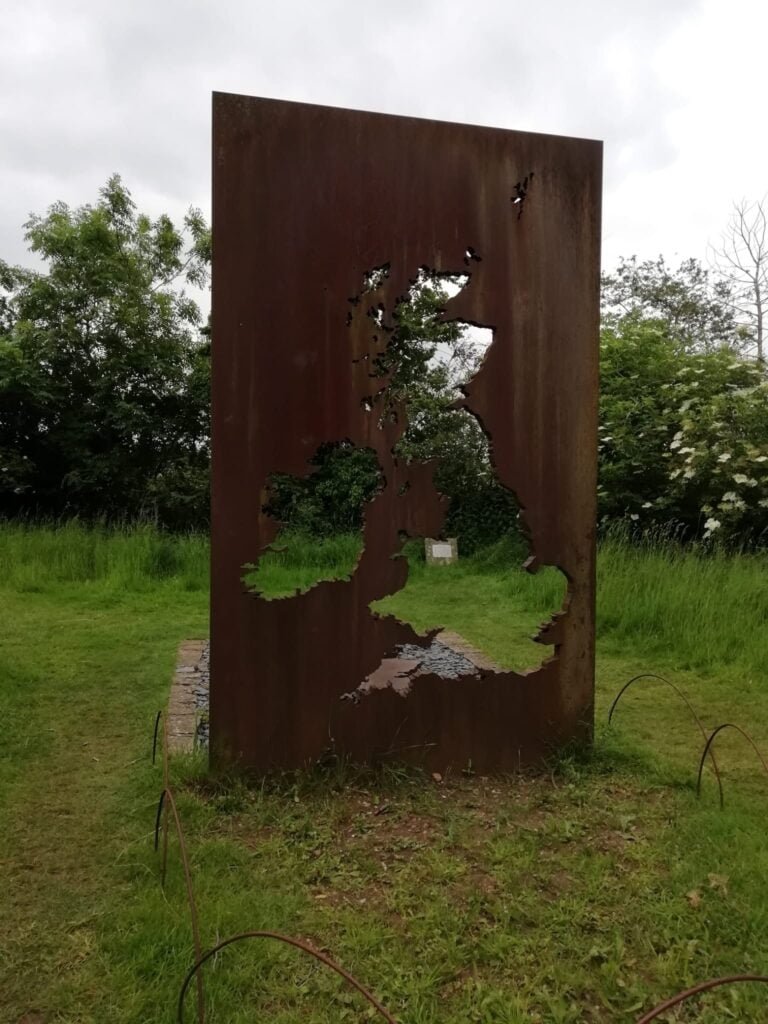
Berl spotted this map sculpture he found in the grounds of Ann Hathaway’s cottage just outside Stratford-on-Avon. It is described as:
A sculpture inspired by Shakespeare’s history plays, designed for Anne Hathaway’s Cottage Tree Garden. The sculptor is Jane Lawrence.
Not sure how this connects to the history plays with no towns depicted?
MapsintheWild Anne Hathaway’s Garden
-
sur The Treats of San Francisco
Publié: 12 June 2024, 9:13am CEST par Keir Clarke
The California Migration Museum is celebrating one of the wonderful benefits of living in a multi-cultural city with a new interactive map of San Francisco’s food scene. Melting Spots: An Immigrant Map of San Francisco Food showcases some of the many immigrant-inspired dishes in the city which have added richer flavors to the city's food scene.Did you know, for example, that the Mai Tai, the
-
sur Apple Maps Gets Topographical
Publié: 11 June 2024, 9:26pm CEST par James
GIS and Topo maps go hand in hand. From the classic Quad maps, to the National Geographic TOPO! product, to just basic Esri Topo map services, these topographic maps have been part of GIS since the beginning. Google Maps has had their “terrain” layer for a long time (though it seems to be fading out for some reason). Apple with the release of Watch OS 10 and the Ultra 2 added topographical maps to at least the watch ecosystem, but still required an iPhone to download the offline maps.
But yesterday Apple finally closed that hole and added topographical maps (including the trails feature) to iOS.

Now this is very user centric at this point. I expect to see these maps start appearing in apps that use MapKit but to what extent I’m not sure. I use onX Offroad quite a bit and suspect it will continue to use their own
-
sur Mappery: A Wild Map in Spitalfields
Publié: 11 June 2024, 11:00am CEST

Elizabeth spotted this cool looking bike in Spitalfields market in London
MapsintheWild A Wild Map in Spitalfields
-
sur OPENGIS.ch: QField 3.3 “Darién”: It is just the beginning
Publié: 11 June 2024, 6:50am CEST
QField 3.3 has been released, and with it, we are proud to introduce a brand new plugin framework that empowers users to customize and add completely new functionalities to their favourite field application. That’s on top of a bunch of new features and improvements added during this development cycle. What preceded this moment was just the beginning!
Main highlights
One of the biggest feature additions of this version is a brand new drawing tool that allows users to sketch out important details over captured photos or annotate drawing templates. This was a highly requested feature, which we are delighted to bring to all supported platforms (Android, iOS, Windows, macOS, and, of course, Linux) with the financial support of the Swiss QGIS user group.
Also landing in this version is support for copying and pasting vector features into and from the clipboard. This comes in handy in multiple ways, from providing a quick and easy way to transfer attributes from one feature to another through matching field names to pasting the details of a captured feature in the field into a third-party messenger, word editing, or email application. Copying and pasting features can be done through the feature form’s menu as well as long pressed over the map canvas. If copy pasting ain’t your style, a new feature-to-feature attributes transfer shortcut has also been added to the feature form’s menu. Appreciation to Switzerland, Canton of Lucerne, Environment and Energy for providing the funds for this feature.

The feature form continues to gain more functionalities; in this version, the feature form’s value map editor widget has gained a new toggle button interface that can help fasten data entry. The interface replaces the traditional combo box with a series of toggle buttons, lowering the number of taps required to pick a value. If you enjoy this as much as we do, send a virtual thanks to German Archaeological Institut – KulturGutRetter, which sponsored this feature.
Other improvements in the feature form include support for value relation item grouping and respect for the vector layer attributes’ “reuse last entered value” setting.

Finally, additional features that are sure to please include support for image decoration overlay, a new interface to hop through cameras (front, back, and external devices) for the ‘non-native’ camera, the possibility to disable the 3-finger map rotation gesture, and much more.
User experience improvementsLong-time users of QField will notice the new version restyling of the information panels such as GNSS positioning, navigation, elevation profile, and sensor data. The information is now presented as an overlay sitting on top of the map canvas, which increases the map canvas’ visibility while also achieving better focus and clarity on the provided details. While revisiting these information panels, we’ve made sure all details, including altitude and distance to destination, respect user-configured project distance unit type.
The dashboard’s legend has also received some attention. You can now toggle the visibility of any layer via a quick tap on a new eye icon sitting in the legend tree itself. Similarly, legend groups can be expanded and collapsed directly for the tree. This also permits you to show or hide layers while digitizing a feature, something which was not possible until now. The development of these improvements was supported by Gispo and sponsored by the National Land Survey of Finland.
Plugin frameworkLast but far away from least, QField 3.3 introduces a brand new plugin framework using Qt’s powerful QML and JavaScript engine. With a few lines of code, plugins can be written to tweak QField’s behaviour and add breathtaking capabilities. Two types of plugins are possible: app-wide plugins as well as project-scoped plugins. To ensure maximum ease of deployment, we have enabled project plugin distribution through QFieldCloud! We extend our heartfelt thanks to Amsa for the financial contribution that brought this incredible project to life.

Stay tuned for an upcoming webinar and a dedicated post that will dive into how QField plugins can revolutionize your field (and business) workflows by allowing you to be even more efficient in the field.
Users interested in authoring plugins or better understanding the framework, can already visit the dedicated documentation page and a sample plugin implementation sporting a weather forecast integration.
-
sur Out of Africa - The Story of Human Migration
Publié: 11 June 2024, 1:30am CEST par Keir Clarke
History Maps has created an interactive map showing the locations of the earliest human fossils found around the world. Early Homo Sapiens Fossil Sites uses data from Wikipedia's List of human evolution fossils to show the locations of the earliest 'notable finds of hominin fossils and remains relating to human evolution'.The fossil sites shown on the map can be filtered using the
-
sur Mappery: Eshkol
Publié: 10 June 2024, 1:00pm CEST
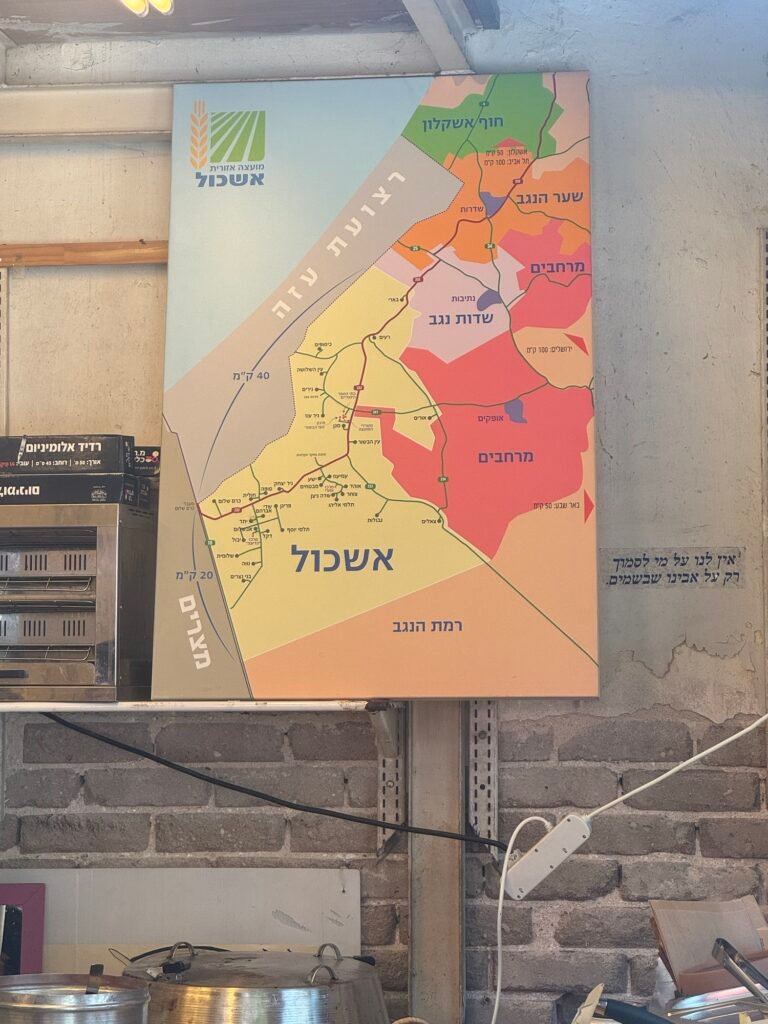
Spotted this map in a cafe in Tel Aviv.
Eshkol is the region adjacent to the Gaza Strip where the attack of 7/10 took place.
It’s a map in the wild not an endorsement of either side in this conflict
MapsintheWild Eshkol
-
sur The Lost Pathfinder Game
Publié: 10 June 2024, 7:50am CEST par Keir Clarke
The Lost Pathfinder is a new online game which requires players to connect a path from one side of map to the other.At the beginning of each round of The Lost Pathfinder you are presented with an isometric grid on which all the road tiles have been mixed up. All you have to do is to rearrange the road tiles in order to complete a path from one side of the map to the other. To help you restore
-
sur Mappery: Breweries of the World
Publié: 9 June 2024, 11:00am CEST
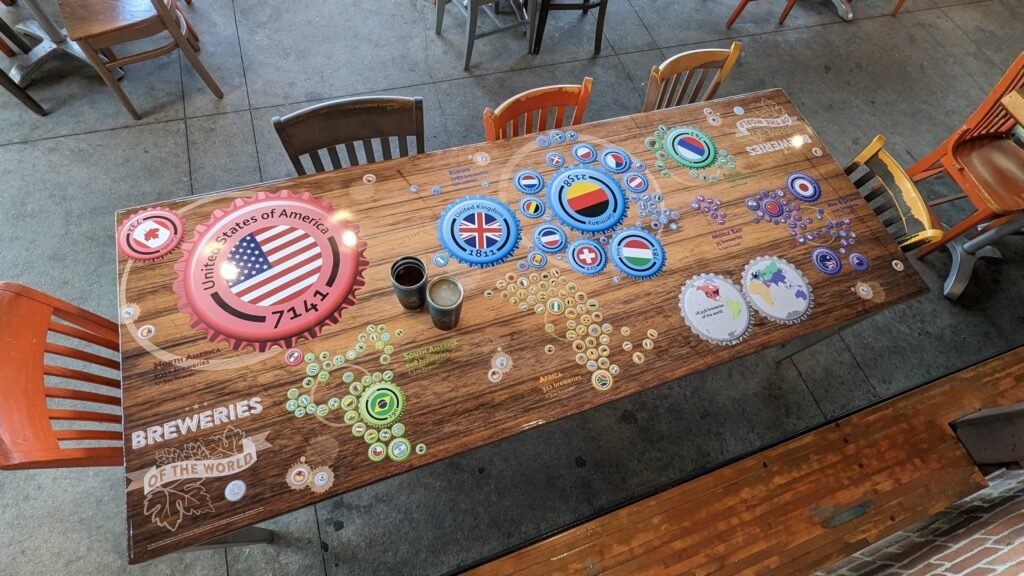

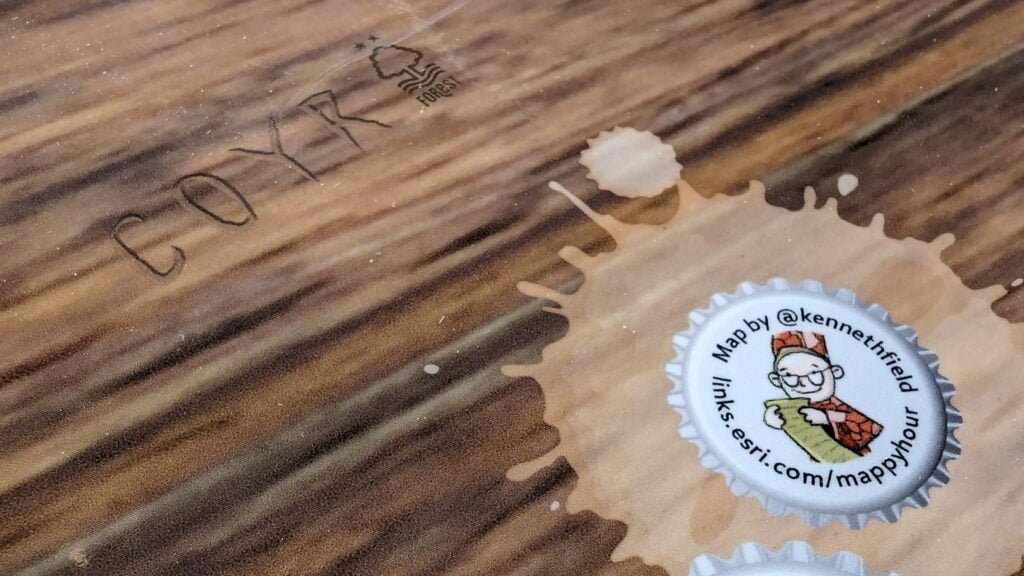

And to end the week nicely, refreshingly, I would say, here is our co-founder, who is back with some art in a bar. This is a version of Kenneth Field’s Breweries of the World.
MapsintheWild Breweries of the World
-
sur Mappery: « C215 autour de l’Inguimbertine »
Publié: 8 June 2024, 11:00am CEST

From the 8th of June to the 31st of October 2024, a temporary exhibition at the Inguimbertine, Carpentras (FR) Chrisitan Guémy, alias C215, exhibits these works, including the maps.
Chrisitan Guémy’s website (link to the English version).
About the exhibit, follow this other link (FR)
MapsintheWild « C215 autour de l’Inguimbertine »
-
sur The Vespa Map of Rome
Publié: 8 June 2024, 9:59am CEST par Keir Clarke
This is yet another map I discovered via the ever fascinating Web Curios, which is a weekly roundup of interesting things found online (very often with an AI bent). This week Web Curios reviewed Dolce Activation, 'a very content-lite website' but one in which you get to drive 'A TINY VESPA AROUND ROME!!!'In truth Dolce Activation is little more than a marketing campaign for Dolce and Gabbana
-
sur Standards Enabling Collaboration For Global Challenges
Publié: 7 June 2024, 3:00pm CEST par Simon Chester
The Open Geospatial Consortium (OGC) is a membership organization dedicated to solving problems faced by people and planet through our shared belief in the power of geography. OGC is one of the world’s largest data and technology consortia and—at 30 years old—one of its longest standing. OGC works with new and established partners and stakeholders to develop and apply accelerated, practical, and implementable solutions to today’s biggest issues, from climate resilience, emergency management, and risk management & insurance, to supply chain logistics, transportation, and health care and beyond.
OGC holds regular member meetings across the globe where geospatial professionals convene to develop standards and advance innovation initiatives led by OGC Members. Most sessions are open to the public and offer valuable opportunities to network with leaders from industry, academia, and government, define future technology trends, and contribute to the open geospatial community.
OGC’s 129th Member Meeting will be held in Montreal, Canada, from June 17–22, 2024. The event kicks off OGC’s 30th anniversary celebrations and carries the theme ‘Standards Enabling Collaboration for Global Challenges.’ Support for the meeting comes from OGC Strategic Member Natural Resources Canada, with additional support from Esri Canada, CAE, Safe Software, and dinner sponsor Bentley Systems.
Eric Loubier, Director General of the Canada Centre for Mapping and Earth Observation at Natural Resources Canada (NRCan) will open the week with a keynote, followed by a 30-year Canadian retrospective by OGC Board Chair Prashant J. Shukle.
“The 129th Member Meeting provides a great opportunity to hear from our incredible Canadian partners and community,” said OGC CEO Peter Rabley. “Some of OGC’s earliest—if not our first—and longest-running supporters have been Canadians and Canadian firms. Our keynote from Eric Loubier and the exciting 30-year Canadian retrospective by Prashant Shukle will serve well to kick off the week’s exciting sessions and discussions.”
“Throughout the 30 years of OGC’s history, Canadians have played a foundational role,” said OGC Board Chair Prashant J. Shukle. “My friend and mentor Dr. Bob Moses, who founded PCI Geomatics, was one of OGC’s first funders and a long-time supporter of OGC. As an emergency room doctor, Bob saw the power of new technologies and data. Critically, he understood that technologies had to work together seamlessly and effectively to really address complex problems.
“Like Bob, many other Canadians instantly saw the powerful role and impact that OGC could have, and I am constantly amazed at their leadership and vision. It is my privilege to honor those Canadians who have gone almost unnoticed here in Canada, but who have fundamentally changed how the world uses technology across so many industries.”
Other highlights of the week will include a Methane Summit, a meeting of the OGC Canada Forum, the popular Future Directions session (this meeting’s topic is AI), as well an abundance of working group sessions on diverse topics such as marine, climate & disaster resilience, and beyond.
The Methane Summit is organized by Steve Liang, Professor and Rogers IoT Research Chair at the University of Calgary and Founder and CTO of OGC Member SensorUp. Steve is spearheading this summit to tackle the critical global challenge of monitoring and tracking methane emissions. The event will feature speakers from McGill University and Environment and Climate Change Canada (ECCC), who will discuss the challenges and opportunities of data management in methane emissions management. Attendees will also be introduced to the Methane Emissions Modeling Language (MethaneML)—a new tool designed to enhance the accuracy and efficiency of methane emissions tracking & reduction. This summit promises to be a significant step forward in our collective efforts to address climate change through innovative data solutions.
The meeting of the OGC Canada Forum is scheduled for June 17 & 18. The Canada Forum is open to all Canadian organizations, regardless of OGC membership status. The sessions have the aim of facilitating collaboration to address Canada’s geospatial needs through capacity building, innovation, standards, and economic growth. Cameron Wilson, Project Manager at Natural Resources Canada (NRCan), will delve into the history, progress, and future priorities of the forum, highlighting key issues crucial for the Canadian community.
Another highlight of the Forum will be a debate addressing the topic: In an era of ever-increasing data availability, there is a pressing need for digital interoperability to solve today’s biggest problems through rapid innovation. Standards only slow this down and are therefore no longer necessary. Debaters include Ed Parsons, Geospatial Technologist at Google, the aforementioned Steve Liang, Will Cadell, CEO of Sparkgeo, and Bilyana Anicic, President of Aurora Consulting. This session promises to offer diverse perspectives on the role that standards can, should, or won’t play in today’s rapidly evolving geospatial landscape.
This meeting’s Future Directions session, held Tuesday morning, is all about AI, with presentations and a panel from Bentley Systems, GeoRoundtable/IEEE GRSS, makepath, and TerraFrame.
Participation in the 129th OGC Member Meeting is welcomed both in-person and remotely. This event is an exciting opportunity to engage in sessions that celebrate three decades of geospatial collaboration and innovation. Attendees will have the chance to learn from, and network with, leading experts from around the world.
Register now for the 129th OGC Member Meeting to be part of OGC’s continued efforts to advance location data and technology and collaboratively address critical global challenges.
The post Standards Enabling Collaboration For Global Challenges appeared first on Open Geospatial Consortium.
-
sur ARC/INFO Manuals
Publié: 7 June 2024, 11:21am CEST par James
If there is one regret in my life, it is that I didn’t steal the ARC/INFO manual binders from one of the jobs I used to use ARC/INFO. I’ve had an eBay search going for years in hope that someone will give them up. I suspect every binder set that still exists will never be given up. It’s like owning a Picasso, you’d never sell it and ask your relatives to bury you with it.
-
sur Mappery: Globe clock
Publié: 7 June 2024, 11:00am CEST
-
sur Every Ship Sunk in WWII
Publié: 7 June 2024, 7:51am CEST par Keir Clarke
Over the course of the Second World War more than 20,000 ships were sunk around the world. Esri's Paul Heersink has spent the last ten years scouring historical records to create and map the 'most comprehensive dataset' of ships sunk in WWII.Resurfacing the Past is a fascinating story map which not only visualizes where Allied and Axis ships were lost in WWII, it also explores the WWII sunken
-
sur QGIS Blog: Danish User Group becomes Flagship Member
Publié: 7 June 2024, 7:34am CEST
QGIS User Groups all over the world have become an essential component of the QGIS community. They provide a point of contact for local users and developers and help people connect through localized communication channels or by organizing events.
Another important aspect of users groups is that many of them also have become sustaining members of QGIS.ORG. In total, their contributions account for a significant share of our project budget.
The Danish User Group now has opened a new chapter by becoming the first user group supporting QGIS on the Flagship level. And that’s a reason to celebrate
 and to reminisce. For example, about the awesome time we had at the first QGIS User Conference organized at the University of Copenhagen campus in Nødebo.
and to reminisce. For example, about the awesome time we had at the first QGIS User Conference organized at the University of Copenhagen campus in Nødebo.
And who can forget how we all struggled to pronounce QGIS 2.16 “Nødebo”?
And how the “ø” upset some services? Good times.
Thank you very much to everyone from the Danish user group and to all the other user groups, small and large, who support QGIS our project and help make it even better for everyone.
-
sur Impact of Microsoft SQL Server 2008 on Geospatial Innovation
Publié: 6 June 2024, 6:17pm CEST par James
We were talking (or typing) on Slack last week and I was asked what I thought was the single greatest software innovation while I’ve been working. A ton of things came to mind from from Apple’s HyperCard (more than anything this made me a programmer) and I even wrote a post about it back in 2006. I don’t think anything on that list is technically incorrect, but I wouldn’t put ArcView 3.x in that list anymore.
BUT, let’s get real here. Each of those software products are amazing in their own right, but I don’t think any of them really moved the needle on spatial like the one I really think impacted the trajectory of what we used to call GIS.
Now I know what you’re going to say, why isn’t it PostGIS??? Now PostGIS has been clearly the leader since SQL Server 2008 arrived, but I believe it was SQL Server which changed expectations on paying for a geospatial database (Oracle, SDE or others). I mean I used to have Esri SDE on Oracle, I can’t even remember how expensive that was and how buggy it all was. Microsoft even put spatial into their free version.
I can’t recall the last time I used stand alone SQL Server, mostly my days are PostGIS or some cloud based spatial geodatabase engine. But, the line before SQL Server 2008 and after is clear as day. All of a sudden enterprise grade geodatabase when from niche to normal and spatial ceased to be special. Using Oracle Spatial or Esri ArcSDE always ended with me tossing the server in the trash.

-
sur Mapgears: Mapgears wins the regional MercadOr award in the category ‘Sustained Growth in Exportation’
Publié: 6 June 2024, 5:24pm CEST
On June 5th, SERDEX International awarded prizes to four companies that stood out in the region. Mapgears was one of the winning companies in the “Sustained Growth in Exportation” category. As mentioned by Daniel Morissette, President of Mapgears:
This award is a recognition for the entire Mapgears team: we sell software, and our raw materials to make it are the brains, skills, and creativity of the team members… without all the team members, none of this would have been possible.
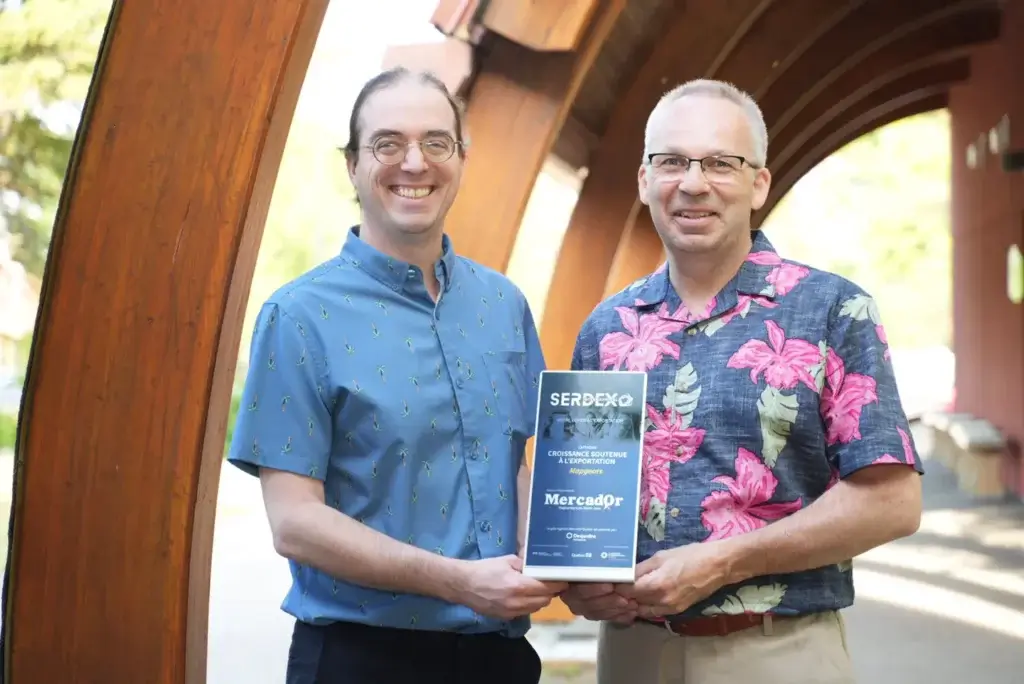
Photo Credit: Journal Le Quotidien
To learn more about this wonderful evening and the incredible companies that were honored, we invite you to read the article in Le Quotidien newspaper right here! (French only)
The post Mapgears wins the regional MercadOr award in the category ‘Sustained Growth in Exportation’ appeared first on Mapgears.
-
sur Tim Waters: Vaisigano
Publié: 6 June 2024, 5:14pm CEST
Vaisigano is a prototype citizen science project focused on fresh water resources by National University of Samoa and The Übersee Museum. On Instagram @s_vaisigano and on Facebook Citizen Science Vaisigano. Vaisigano is the name of the river in Samoa by the University.
Last year I was involved to help develop the prototype mobile-first web app for geolocated data collection ahead of a visit to the field with biologists and students.
Aimed at non specialist university students to use in the field to help survey and record measurements and observations for river quality health along a river in Samoa. The purpose of this first app is to show possibilities and demonstration for future solutions. River and water quality measurements can involve surveys for invertebrates (aquatic insects), pH of the water, turbidity, velocity, temperature etc. Traditionally such surveys were taken, recorded on paper and input later back in the laboratory. A mobile device out in the field can also have documents, multimedia and tutorials to guide users. The project involved research into Citizen Science projects. Many good platforms exist, for example ODK or Kobo which can have very complex and detailed logic for forms but it was decided that a more user friendly and casual approach would be better.
The front page gives a brief outline, a call to action button “Start Collecting”, two summary tables of the latest observations and the latest active users.

The main aims:
- Sustainable – able to run on its own
- Collect data in a continuous manner
- Accessible and easy to use
- Handheld
- Benefit learning for curriculum
- Incorporate reinforcement rewards, feedback
- Surveys should be georeferenced
- Review of previous surveys
Some of the challenges included GPS variability in forest, using mobile devices and water, and bandwidth requirements in the field.
The app showed tips before starting.

The application was designed around 3 types of data forms. physical, biological and chemical
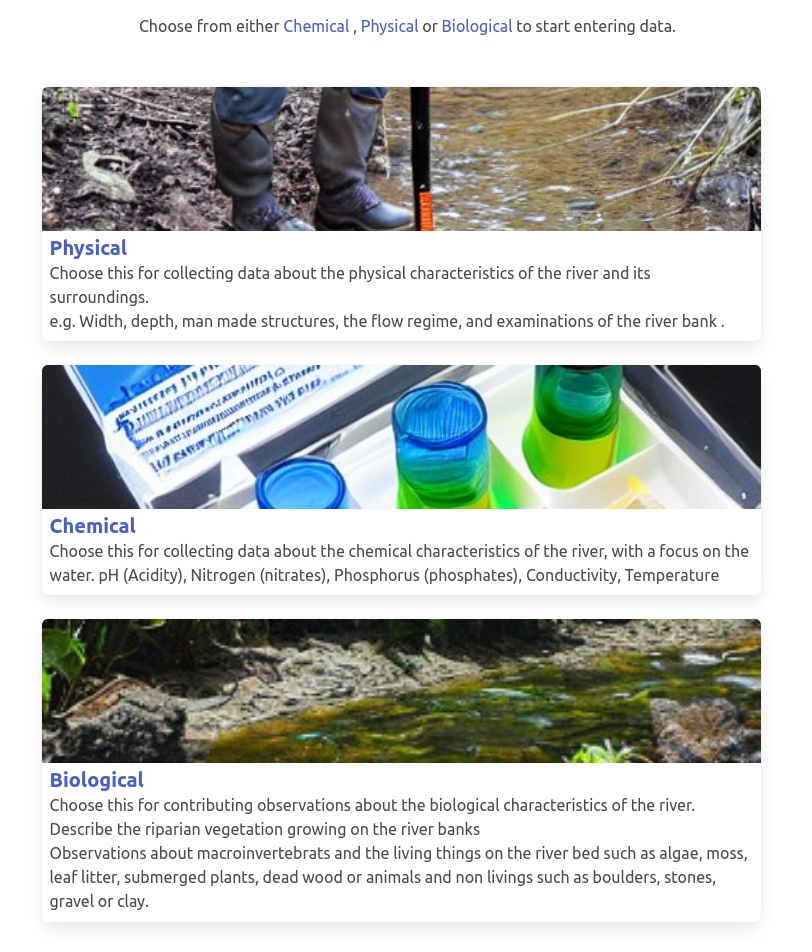
Each form had a time and location which used browser / GPS geolocation. Users could move the location if they wanted.

Physical
- River width
- River depth
- Has it been raining or not?
- What evidence of water user can you see (fishing, boats, use for homes, irrigation, etc)
- What man made structures can you see (e.g. weirds, dams, wells, bypass channels etc
- On the surface. Can you see foam, litter, oil on the surface?
- What land use is around the site (pasture, town, forest etc)
- Flow regime. (pools, ripples, waterfalls, rapids, cascade etc)
- What is the colour of the water (clear, murky etc)
- Estimate the water flow (still, slower, or faster than walking speed etc)
- Turblence of water (calm, turbulent)
- Images looking down stream showing both banks
Chemical
These needed a kit to help complete- Water temperature
- Water acidity
- Conductivity
- Nitrates
- Phosphates
Biological
- Description of the river bank and vegetation and what % of the river is shade
- What evidence of aquatic life: plants below surface, emerging, floating. Fish, insects etc
- Substrates – boulders, stones, gravel, sand, organic matter etc
- Macroinvertables
- From kick sampling
- These allowed users to add a name with a count and attach images.
- Some species would be pre-populatated in the boxes.

The site has an admin page which allows editing and reviewing of contributions and allows them to download all the data as a spreadsheet and to download the images zipped up.
The site has a simple scoring for users based on number of contributions, and shows feedback of their contributions so that people can see the reports coming in and the nature of them


code on github
-
sur GRASS GIS: Results of the GRASS GIS student grant
Publié: 6 June 2024, 1:12pm CEST
Easy command history navigation through the History browser panel Linda’s work in her own words During my master’s studies, I began contributing to the enhancement of the GRASS GIS user interface (GUI). My main goal was to increase its user-friendliness, making GRASS accessible not only to experienced users with scripting knowledge but also to GIS beginners. Over the years, I have worked on several projects, including: - “Creation of a new GRASS GIS startup mechanism”, - “First steps towards a new GRASS GIS Single-Window GUI “, - “Redesigning a map display status bar combo box into a new settings dialog “, - “Improving Single-Window GUI user experience”. -
sur Mappery: D-Day Landings
Publié: 6 June 2024, 11:00am CEST
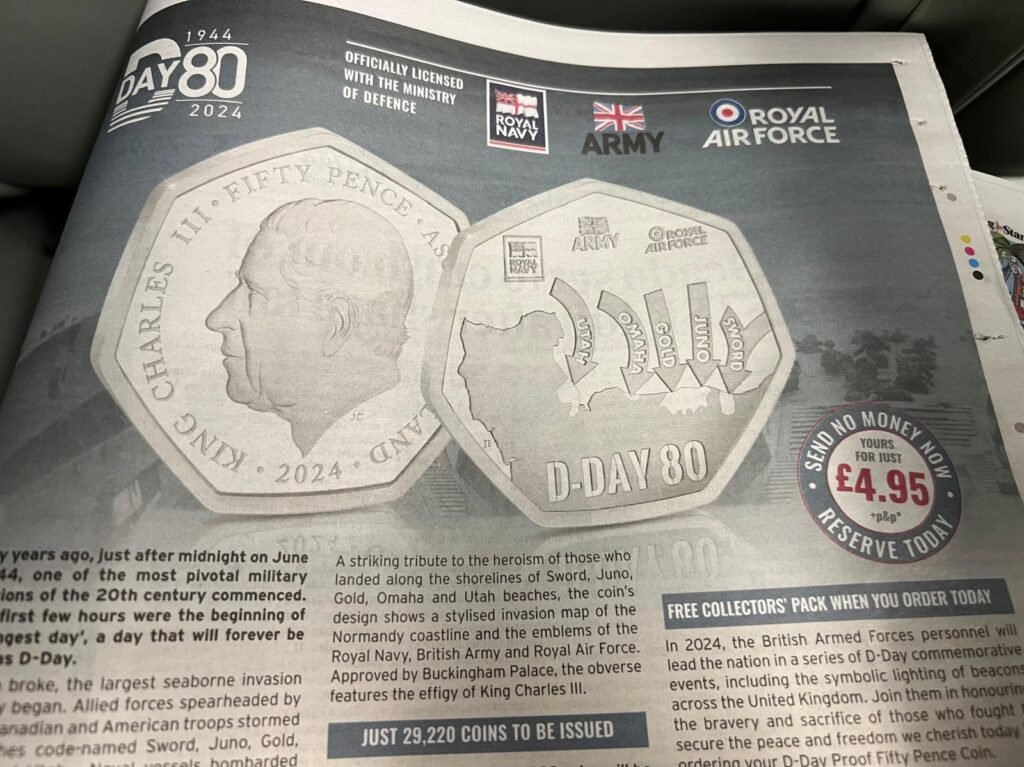
Elizabeth spotted this advert for a special commemorative coin for the D-Day landings which took place on June 6th, 1944. The coin has a map illustrating the five landing sites – Utah, Omaha, Gold, Juno and Sword
MapsintheWild D-Day Landings
-
sur The Sound of the City
Publié: 6 June 2024, 8:44am CEST par Keir Clarke
Every city in the world has a unique sound. On Sonicity that unique sound is generated by each city's map. Select a city on Sonicity (currently limited to 10 global cities) and you can listen to its map being played by various instruments. To be honest I have no idea what is going on here. The only info that Sonicity provides is that 'Each city has its own unique geographical data. These
-
sur OPENGIS.ch: QField receives prestigious recognition as a digital public good from the Digital Public Goods Alliance
Publié: 6 June 2024, 8:28am CEST
We are thrilled to announce that the Best of Swiss Apps Enterprise winner 2022, QField, has been officially recognized as a Digital Public Good by the UN-endorsed Digital Public Goods Alliance. This prestigious recognition highlights QField’s significant contributions to six key Sustainable Development Goals (SDGs): SDG 6 (Clean Water and Sanitation), SDG 9 (Industry, Innovation, and Infrastructure), SDG 11 (Sustainable Cities and Communities), SDG 13 (Climate Action), SDG 15 (Life on Land), and SDG 16 (Peace, Justice, and Strong Institutions). The “Swiss Made Software” QField is the leading fieldwork application with almost 1 Million downloads worldwide.
Leading the Way in Fieldwork TechnologyQField stands out as the leading fieldwork app, designed to bring the power of geospatial data collection and management to the fingertips of users worldwide. Developed with a user-centric approach, QField allows seamless integration with QGIS, providing a robust and intuitive platform for data collection, visualization, and analysis directly in the field. This recognition as a Digital Public Good underscores QField’s vital role in advancing digital solutions for sustainable development.
 QField 3.2 Statistics
Accessible for Everyone
QField 3.2 Statistics
Accessible for Everyone
One of QField’s key strengths is its ease of use, making it accessible not only to professionals but also to students, researchers, and community members. Its intuitive interface ensures that users with varying levels of technical expertise can efficiently collect and manage geospatial data. This inclusivity promotes wider adoption and engagement, enhancing the app’s impact across different sectors and communities.
 Land surveying project Tonga
Exemplary Open Source Project
Land surveying project Tonga
Exemplary Open Source Project
At the heart of QField’s success is its commitment to technological excellence and open-source principles. As an exemplary open-source project, QField fosters a collaborative environment where developers and users alike contribute to continuous improvement and innovation. QField frequently contributes back to its upstream project, QGIS, ensuring mutual growth and enhancement of both platforms. This community-driven approach not only enhances the app’s functionality but also ensures that it remains accessible and adaptable to diverse needs across the globe.
Supporting Sustainable Development GoalsQField’s capabilities extend beyond just one aspect of the United Nations Sustainable Development Goals (SDGs); they intersect with multiple goals, enhancing efforts towards a sustainable future:
- SDG 6: Clean Water and Sanitation: QField facilitates efficient water quality monitoring and management, ensuring communities have access to clean and safe water.
- SDG 9: Industry, Innovation, and Infrastructure: By providing cutting-edge tools for infrastructure planning and development, QField drives innovation in various industries.
- SDG 11: Sustainable Cities and Communities: QField supports urban planning and sustainable development, contributing to the creation of resilient and inclusive cities.
- SDG 13: Climate Action: The app enables precise data collection for climate research and environmental monitoring, aiding in climate action initiatives.
- SDG 15: Life on Land: QField aids in biodiversity assessments and conservation efforts, promoting the sustainable use of terrestrial ecosystems.
- SDG 16: Peace, Justice, and Strong Institutions: Through its reliable and transparent data management capabilities, QField supports the development of strong institutions and governance systems.
 Post-disaster assessment Tonga
A Future of Innovation and Sustainability
Post-disaster assessment Tonga
A Future of Innovation and Sustainability
As we celebrate this recognition, we remain committed to pushing the boundaries of what is possible in fieldwork technology. QField will continue to evolve, driven by the needs of its global user base and the imperative to support sustainable development. We invite all stakeholders to join us on this journey towards a more sustainable and equitable future.
 Land surveying project Tonga
Land surveying project Tonga
For more information about QField and its contributions to the SDGs, please visit [https:]]
Media Contact:Marco Bernasocchi is happy to receive interview requests or queries about the project.
Email: marco@opengis.ch
Phone: +41 79 467 24 70 (14:00 – 18:00 CET)OPENGIS.ch GmbH
About the OPENGIS.ch product “QField” application
Via Geinas 2
CH-7031 LaaxQField is an open-source fieldwork app that integrates seamlessly with #QGIS, providing a powerful platform for data collection, visualization, and analysis. Designed for professionals across various sectors, QField empowers users to efficiently manage and analyze geospatial data in the field, contributing to sustainable development and innovation worldwide. Link: https://qfield.org
 About the OPENGIS.ch service QFieldCloud
About the OPENGIS.ch service QFieldCloud
#QFieldCloud is a spatial cloud service integrated in #QField that allows remote provisioning and synchronisation of geodata and projects. Although “QFieldCloud” is still in an advanced beta stage, it is already being used by many groups to significantly improve their workflows. Link: https://qfield.cloud
About OPENGIS.ch:OPENGIS.ch GmbH is a Swiss software development company based in Laax. OPENGIS.ch employs 19 people and works mainly in the field of spatial software development, geodata infrastructure deployments and professional support. Personalised open-source GIS solutions are often planned and developed as desktop or mobile applications. OPENGIS.ch finances itself through tailor-made customer solutions, professional support and adaptations. Link: https://opengis.ch
 OPENGIS.ch
About Digital Public Goods Alliance (DPGA)
OPENGIS.ch
About Digital Public Goods Alliance (DPGA)
The Digital Public Goods Alliance is a multi-stakeholder initiative endorsed by the United Nations Secretary-General, working to accelerate the attainment of the Sustainable Development Goals in low- and middle-income countries by facilitating the discovery, development, use of, and investment in digital public goods.
For more information on the Digital Public Goods Alliance please reach out to hello@digitalpublicgoods.net.
Images for editorial purposes are freely available for download if the copyright ©OPENGIS.ch is mentioned: [https:]]
-
sur 19 Years and 2,362 Posts
Publié: 5 June 2024, 10:17pm CEST par James
I mean we’ve been saying it since Elon had bought Twitter, but the deed is done.
The social network formerly known as Twitter has officially adopted X.com for all its core systems. That means typing twitter.com in your browser will now redirect to Elon Musk’s favored domain
I was talking to a good friend over email last month and he had this to say:
The fun days of early twitter and before that blogging certainly made our industry more fun — thanks so much for your key role in that. Sadly those days seem to be gone and I don’t know where to find the modern equivalents.
He is so right, I’m not sure how important my role was in the whole Twitter Geospatial world was, but that grouping we had back then was some of the best sharing of ideas and opinions I’ve ever been part of. I find myself rarely sharing anything spatial on Twitter anymore, mostly it is where I go to complain about the San Francisco Giants, Los Angeles Lakers or Arizona State Sun Devils. And most of that is just shouting into the abyss. This leaves no space for any outlet of my thought and feelings on spatial and the such.
Hence I’m back to blogging, I feel like this has always been the best format for longer form thoughts and given I control the content vs some insane emerald mine heir this is better for my sanity. I am laughing at some of your still using RSS readers (heck I’m one) and having this post show up in your feed after many years. Thanks for never unsubscribing and stay tuned!
-
sur Mappery: Change the World sip by sip
Publié: 5 June 2024, 11:00am CEST
-
sur The Warlord Map Game
Publié: 5 June 2024, 8:43am CEST par Keir Clarke
Are you ready to conquer Europe in a battle of Computer Classic Warlord? In this game of military conquest only the strongest survive. So get ready to engage in a thrilling battle of supremacy to take over the entire map of Europe.Readers of a certain age may remember the board-game The Warlord. The Warlord is a 1970's game of nuclear conquest, in which players attempt to conquer countries
-
sur GeoServer Team: How to Implement Basic Security in Geoserver
Publié: 5 June 2024, 2:00am CEST
GeoSpatial Techno is a startup focused on geospatial information that is providing e-learning courses to enhance the knowledge of geospatial information users, students, and other startups. The main approach of this startup is providing quality, valid specialized training in the field of geospatial information.
( YouTube | LinkedIn | Facebook | X )
How to Implement Basic Security in GeoserverIn this session, we want to discuss the Security section in GeoServer, Defining Users, Groups, and Roles, and Granting rights to created users. If you want to access the complete tutorial, simply click on the link.
IntroductionGeoServer has a robust security subsystem. Most of the security features are available through the Web Administration interface. In the Security panel, you can find links to set user properties and bind data to security rules. The basic idea is that you create users and roles, and then combine them with data rules to enable a specific set of access policies. You can also limit read and write access by role.
Defining users, groups, and rolesSecurity in GeoServer is based on a role system where each role defines a specific set of functions. You can assign roles to users and groups; that is, assign functions to real people using your system. To ensure data security, you must identify who is accessing your layers and services.
To organize your real users, GeoServer provides you with the user, group, and role concepts. With the first two, you can insert real people into the GeoServer security subsystem, and with roles, you can grant rights to real users.
User definitionIn GeoServer, a user is someone entitled to use the system; it may be another software or a real person. When you add a user to the security system, GeoServer stores a username, uniquely identifying the user, a password, and a set of key/value pairs to store general information about it. You can disable a user at any time, preventing him from using the system.
Group definitionA group in GeoServer is a collection of users. It consists of a list of usernames that are part of the group, along with a unique group name that identifies it. Since GeoServer may have a large number of users, assigning roles to each individual user can be challenging. Therefore, groups can be created to simplify the process, allowing roles to be assigned based on the group membership of users.
Note. Considering that there are no dependencies between users, groups, and roles. A group can be disabled, but note that this only removes the roles deriving from the disabled group and does not disable the users belonging to the group.
Roles definitionGeoServer roles are associated with performing certain tasks or accessing particular resources. Roles are assigned to users and groups, authorizing them to perform the actions associated with the role.
Creating users and groupsTo fully understand how security works in GeoServer, we will use a typical scenario. We want to restrict access to this data to only the organization’s members. Inside the organization, there are a few people editing data to create new data sets or to update existing ones, and many more members who need to read data to compose maps. There is also a need for an administrator to keep it all working. Lastly, we need to consider that our GeoServer site also contains data that should remain freely available. We will now create the security organization from an unsecured GeoServer as follows:
- In the Security section of the left pane, click the Users, Groups, and Roles link. This link shows you the User Group Services configured. You will find the default service shipped with GeoServer. Click on the Name to edit it.
- Select the Groups tab, then click on Add a new group.
- Enter
group_readersas a group name and leave the group Enabled. Do not assign any role to the new group as we will create specific roles later. Press the Save button. - Repeat the previous step to create the
group_editorsandgroup_adminsgroups. Your list should now show the three groups. - Now switch to the Users tab. Obviously, it lists the only existing user, that is, admin, as shown in the screen.
- Click on the Add new user link, and add
user_adminwith a password of your choice, as Data Administrator. - Add “user_admin” to the “group_admins”, then press the Save button.
- Repeat the previous step to create a user,
user_editoras a member of the “group_editors” group, anduser_readeras a “group_readers” group member. Your list now shows the three users.
We just created three users for the three groups and this may seem overkill to you. Consider them as templates for real users. In the real world, we do not want to have too many administrators; we will probably need several “user_readers” and “user_editors” processing the data. Now, we need to define what they can do on GeoServer.
Defining rolesA user or a group without any role assigned is useless. Now it is time to create roles and assign them to our users. Please refer to the following points:
- From the User, Groups, and Roles section, select the Roles tab. You will find that two roles already exist. They are the administrative roles assigned to the admin account, and they grant access to all GeoServer configurations. Click on the Edit link
- Switch to the Roles tab, then click on Add new role.
- Enter
role_readeras a new role name. We do not need a Parent role. A child role inherits all the rights from the Parent role, making it useful when you want to extend a basic role with more rights. Indeed, we will do this in the next step. - Press the Save button and then repeat the previous step to create the
role_editorrole. This time, select “role_reader” as the Parent role. - Press the Save button and then repeat the previous step to create the
role_adminrole. This time, select “role_editor” as the Parent role. - The final step is to associate a role to users or groups. Select the User, Groups, and Roles page from the left pane, then select the Groups list and click on the “group_readers” group to edit it. Add the “role_reader” role to the group and save it.
- Now click on the “group_editors” group and associate it with the role_editor role.
- Finally, associate the “group_admins” group to the “role_admin” role.
By defining roles and associating them to the users, we completed the definition of our organization. Now, we need to explore how data is bound to roles and users.
Accessing data and servicesGeoServer supports access control at both the service level and at the per-layer or per-workspace level, allowing for restriction of service operations to authenticate users with specific roles. This helps in ensuring data security and controlling access to different layers or workspaces within the server. When working with layers, you can define rules that specify what a role can do on any specific layer.
The operations controlled are the view, write, and admin access. When granting read access on a layer, you enable a user to add it on a map; while granting write access you enable the user to update, create, and delete features contained in the layer. The admin access level enables the user to update the layer’s configuration.
Layer SecurityWe want to protect the dataset contained in the
testworkspace from unauthorized access while leaving the remaining layers freely available to all users. In this section, we will associate layers and roles:- Navigate to the Data > Security page. The rules list shows the two shipped with the default GeoServer configuration.
The
*.*.rrule is associated with the*roles. This means that “any user”, including the anonymous one, can access “any layer” from “any workspace” configured on GeoServer. The general format of the rules is: workspace.layer.accessMode. - Now click on the Add new rule link. In the rule editing page, select
testas the Workspace and leave “*” as a Layer. Since we want to protect all layers in this workspace, the Access mode should be Read. Select the “role_reader” role and move it to the right list by clicking on the arrow. Press the Save button to create the reading rule. - Repeat the previous step to create a writing rule. Select Write as the access mode and “role_editor” as the role.
- Repeat the previous step, then create the administration rule. In other words, select Admin as the Access mode and “role_admin” as the Role.
- Press the Save button, on the rule list page, and then log off from the GeoServer web interface. If you try to access the layer preview anonymously, you won’t see any layers from the
testworkspace while all the others are still listed. - Now, log on as “user_reader”, with the password you assigned to him. Going back to the layer preview, you should see the
testlayers listed. Try the Open Layers preview page for theriverlayer. It works and you can use the data to compose maps. - However, “user_reader” can’t edit the styles associated with the layer or any other property. He would need admin rights granted for it; can you guess who the proper user will be?
- Log on to GeoServer as “user_admin”. Now, the left pane is richer than it was when you were “user_reader”, but with fewer features than those visible to the GeoServer’s default admin role. Click on the Layer link; you will see only the layers belonging to the
testworkspace. - If you go on Layer preview and select the
riverslayer again, can you see the map? Of course, you can. Because of roles inheritance, which you set when creating the roles. So, “role_admin” inherits all the rights from “role_editor”, and hence from “role_reader”.
In this session, we took a brief journey through GeoServer security. we discussed the Security section, Defining Users, Groups, and Roles, and Granting rights to created users in GeoServer. If you want to access the complete tutorial, simply click on the link.
-
sur Mappery: The Mountain Goats Tour 2019
Publié: 4 June 2024, 11:00am CEST
-
sur Indian Election Maps
Publié: 4 June 2024, 9:26am CEST par Keir Clarke
Counting is now underway of the votes in the world's largest election. Over 642 million people are expected to have voted in the 2024 Indian General Election, the result of which will be declared today (June 4th). Based on the earliest results it appears that current prime minister Narendra Modi is likely to keep his job, but that his party, the BJP, will win less seats than in 2019.The Times
-
sur Mappery: Clerkenwell Design Week
Publié: 3 June 2024, 11:00am CEST
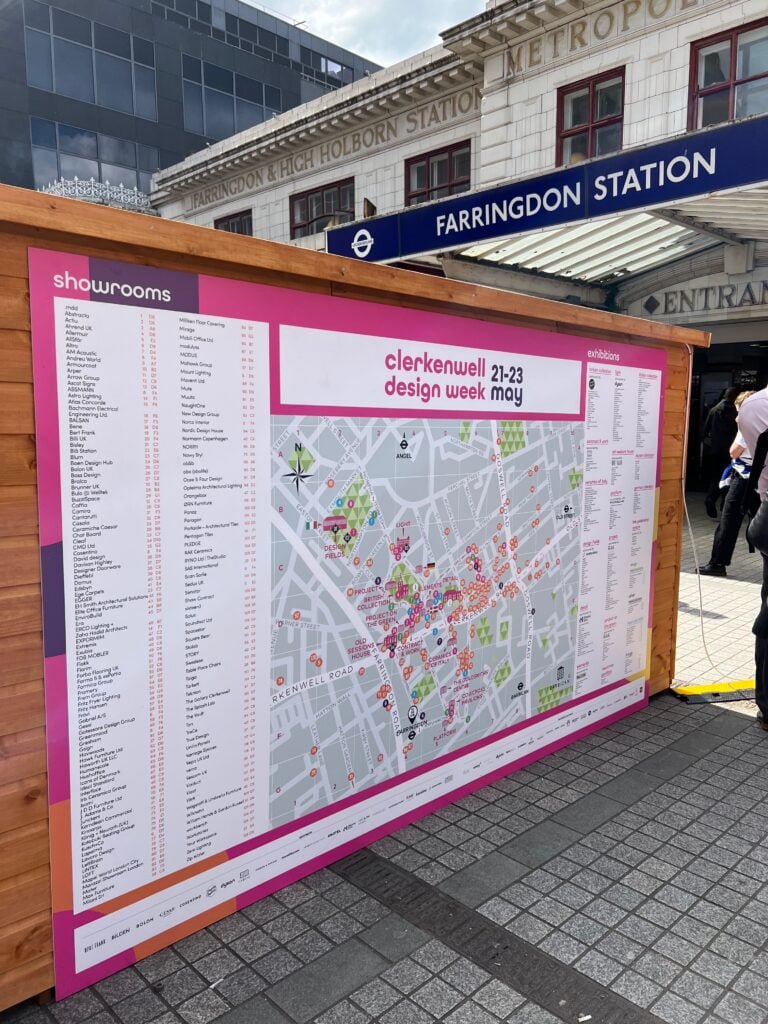
A few weeks ago, Clerkenwell Design Week took place. The website offers an interactive virtual map, but luckily, we could find some real ones, in the wild, wandering in the street during the event.
MapsintheWild Clerkenwell Design Week
-
sur Find Your Nearest Hurricane
Publié: 3 June 2024, 8:36am CEST par Keir Clarke
As this year's hurricane season gets underway StarNews has released an interactive map which allows you to see how many tropical storms have passed near your home since 1851. Enter your address into the Hurricanes that passed near me map and you can view the tracks of all the hurricanes and tropical storms that have occurred near your home since the middle of the 19th Century. The StarNews
-
sur Mappery: Shirts
Publié: 2 June 2024, 11:00am CEST
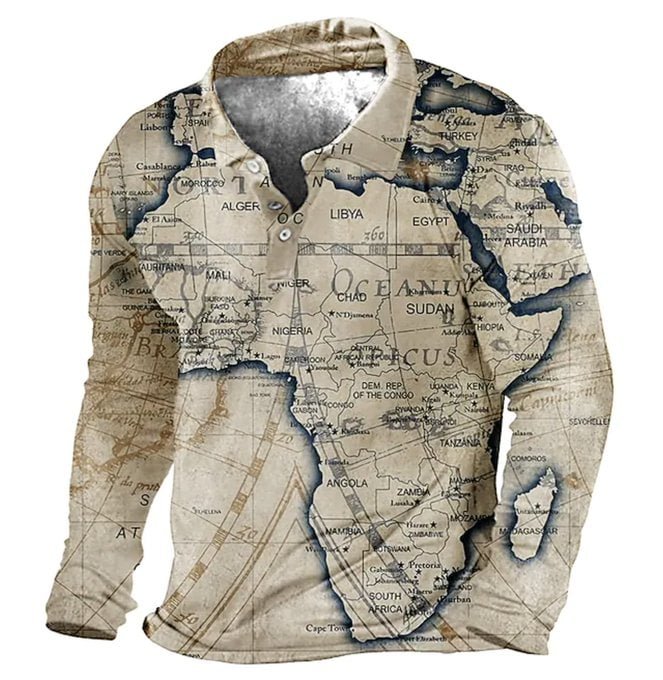
Alex Selby-Boothroyd sent us these shirts; thank you for sharing. Let’s do a bit of commercial, here is a link men-s-golf-shirt. And some other options below
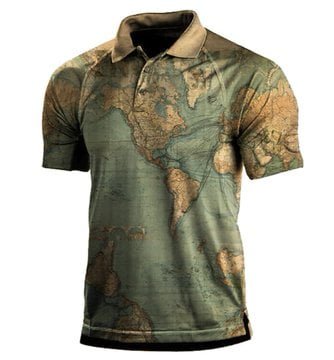
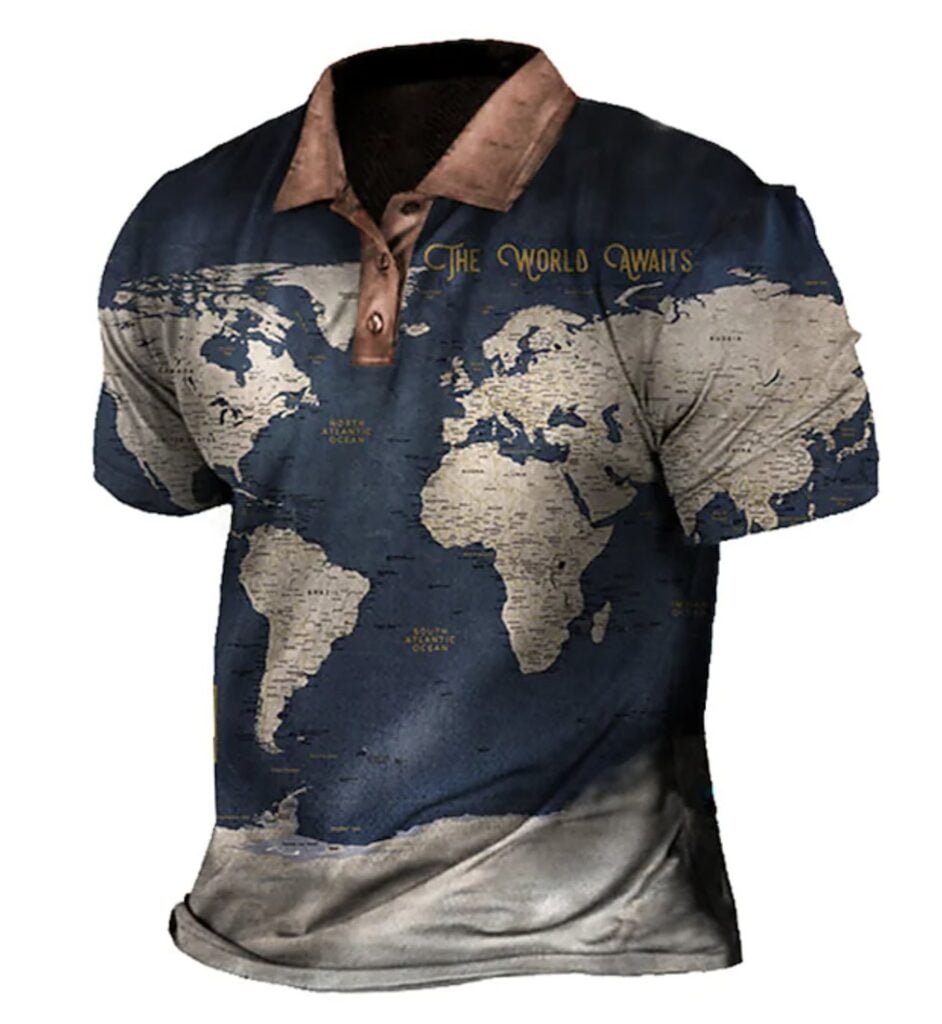
MapsintheWild Shirts
-
sur The 46 States of America & Each State Flower
Publié: 2 June 2024, 10:37am CEST par Keir Clarke
Close-up of the Flying Donkey map game Yesterday I had a lot of fun browsing through the Osher Map Library. The Osher Map Library and Smith Center for Cartographic Education, at the University of Southern Maine has a wonderful collection of vintage maps. Many of which you can view online.There are lots of curiosities in the collection, including the Flying Donkey Game, Yaggy's Nature in
-
sur Mappery: Netherlands in a Sushi
Publié: 1 June 2024, 11:00am CEST
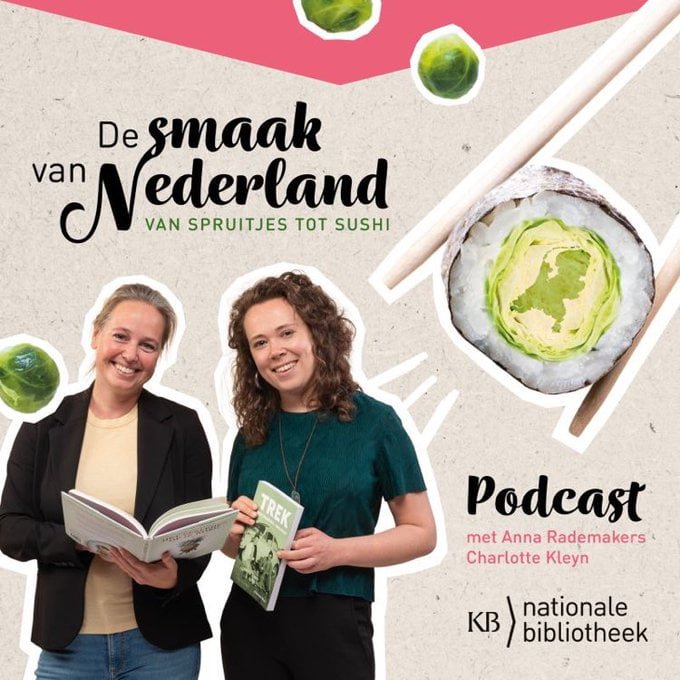
Reinder sent us a while ago this sushi roll; for a long time, I hesitated to publish it; is this real? Let’s have a conversation on our social. And for now let’s enjoy the sushis.
MapsintheWild Netherlands in a Sushi
-
sur Paul Ramsey: Cancer 10
Publié: 1 June 2024, 2:00am CEST
Back to entry 1
So, I got the news from pathology.
There is no cancer left in me, I am officially “cured”.
Since I am still recovering from surgery and relearning what my GI tract is going to do for the future, I don’t feel entirely cured, but I do feel the weight of wondering about the future lifted off of me.
The future will not hold any more major cancer treatments, just annual screening colonoscopies, and getting better post-surgery.
I truly have had the snack-sized experience, not that I would recommend it to anyone. Diagnosed late February, spit off the back of the conveyor belt in late May. Three months in Cancerland, three months too many.
A few days ago NBA great Bill Walton died of colorectal cancer. It’s the second most common cancer in both men and women, and you can avoid a trip to Cancerland through the simple expedient of getting screened. Don’t skip it because you are young, colorectal cancer rates amount people under 50 are going up fast, and nobody knows why (there’s something in the environment, probably).
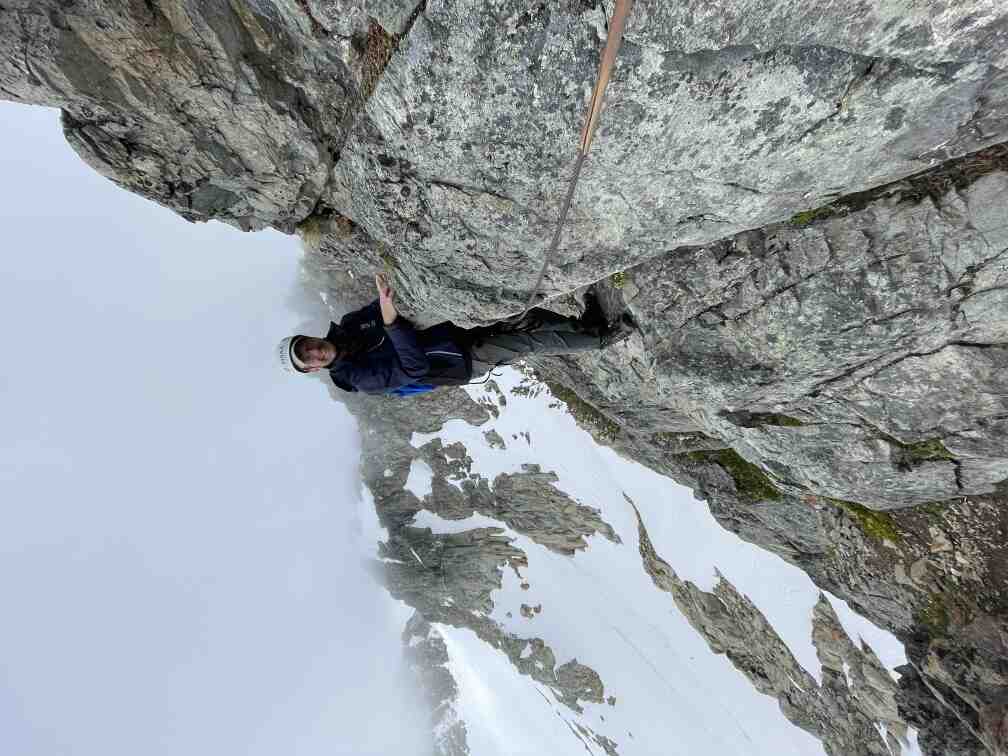
-
sur Earth Nose Game Champion 2024
Publié: 31 May 2024, 2:59pm CEST par Keir Clarke
Welcome to the 2024 Earth Nose Game World Championship! This year's event promises to be the most exciting and innovative yet, as players from around the globe gather to showcase their unique skills and compete for the coveted title of World Earth Nose Champion. Players in this year's competition will have to be at the very top of their nasal game as the 2024 Nose Game World Championship
-
sur Mappery: Palm Springs airport
Publié: 31 May 2024, 11:00am CEST
-
sur gvSIG Team: The Ministry of Transport and Sustainable Mobility awards the first National Prize for Geographic Sciences to the gvSIG association
Publié: 31 May 2024, 8:34am CEST

The Ministry of Transport and Sustainable Mobility has awarded the gvSIG association the first National Prize for Geographic Sciences, which honors individuals or entities that have made significant contributions through special actions or professional careers in the field of Geographic Sciences. The award resolution will be published shortly in the Official State Gazette (BOE).
This award, which includes a monetary prize of 20,000 euros, is overseen by the National Geographic Information Center at the initiative of the Superior Geographic Council, the governing body of the National Cartographic System. It aims to highlight the contribution, innovation, and impact of advancements achieved in the production, updating, and everyday use of geographic information, its infrastructures, and the derived products and services.
The gvSIG Association is a Spanish non-profit entity dedicated to research, innovation, and development of free and open-source software technologies related to geographic sciences. Based on values such as collaboration, solidarity, and shared knowledge, it has become an international reference, with its catalog of technological solutions for managing geographic information being used practically worldwide.
The gvSIG Association has made significant contributions to the open-source community and geographic technologies, as well as to the promotion of standards. It has developed a range of widely used solutions that have enabled the establishment of a new successful business model, allowing small and medium-sized Spanish companies to offer services and projects in various countries.
Thus, it has carried out projects in more than thirty countries, promoting the internationalization of Spanish companies. Examples of major projects include the Spatial Data Infrastructure of Uruguay, the SDI of the State of Tocantins in Brazil, the application for identifying risks in the movements of Blue Helmets in Mali, the SDI of Repsol for managing renewable energy projects, the Urban Expansion Atlas developed for UN-Habitat, and the current development of the multipurpose cadastral management system of the Dominican Republic.
The National Prize for Geographic Sciences thus recognizes this association for its individual and collective contributions and innovations in the field of geographic sciences and engineering, geomatics, cartography, and geospatial information, as well as its significance and impact on public administrations and society in general.
The jury that recommended granting the award made its decision unanimously after evaluating the merits of a total of fourteen candidates, which raised the deliberations to a high level of excellence. The jury was chaired by the Undersecretary of Transport and Sustainable Mobility and President of the Superior Geographic Council, with the Director General of the IGN and President of the CNIG acting as vice president, and included members representing the governing bodies of the Superior Geographic Council and professional associations in the field of geographic sciences.
-
sur Camptocamp: SUEZ 3D: First version of a multi-input Cesium viewer
Publié: 31 May 2024, 2:00am CEST
Pièce jointe: [télécharger]
SUEZ Smart Solutions is a branch of the SUEZ Group that offers technological solutions for intelligent water and waste management. In January 2024, Suez launched a Proof of Concept (POC), a significant step in its efforts to optimize interventions on its water management network.
-
sur Map Disco 2000
Publié: 30 May 2024, 6:05pm CEST par Keir Clarke
Apropos of nothing I present to you my Dancing Polygons!This afternoon I asked ChatGPT to help me create interactive polygons from an isometric grid that I had created using turf.js. I wanted to give a click event to each diamond polygon shape in the isometric grid. However ChatGPT had other ideas and instead decided to create a series of irregular polygon shapes by connecting random
-
sur Free and Open Source GIS Ramblings: ChatGPT Data Analyst vs movement data
Publié: 30 May 2024, 4:26pm CEST
Today, I took ChatGPT’s Data Analyst for a spin. You’ve probably seen the fancy advertising videos: just drop in a dataset and AI does all the analysis for you?! Let’s see …
Of course, I’m not going to use some lame movie database or flower petals data. Instead, let’s go all in and test with a movement dataset.
You don’t get a second chance to make a first impression, they say. — Well, Data Analyst, you didn’t impress on the first try. How hard can it be to guess the delimiter and act accordingly?

Anyway, let’s help it a little:
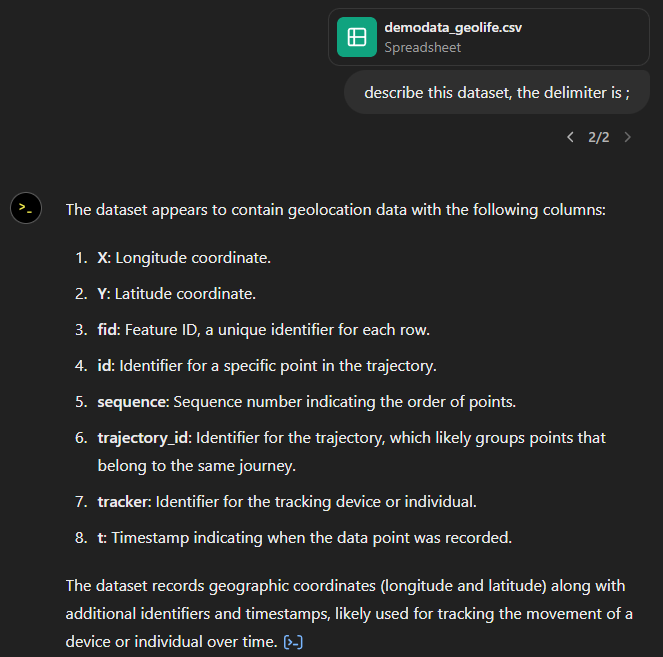
That looks much better. It makes an effort to guess what the columns could mean and successfully identifies the spatiotemporal information.
Now for some spatial analysis. On first try, it didn’t want to calculate the length of the trajectories in geographic terms, but we can make it to:
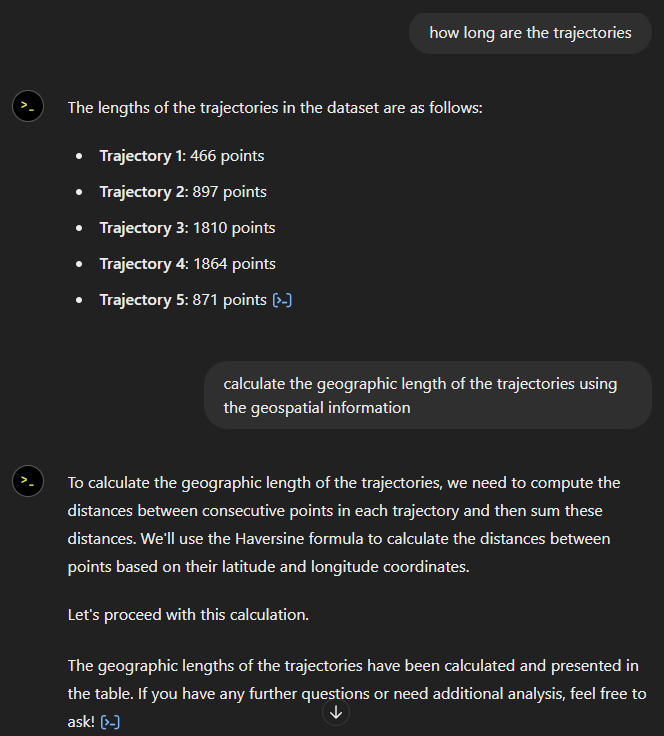
It will also show the code used to get to the results:
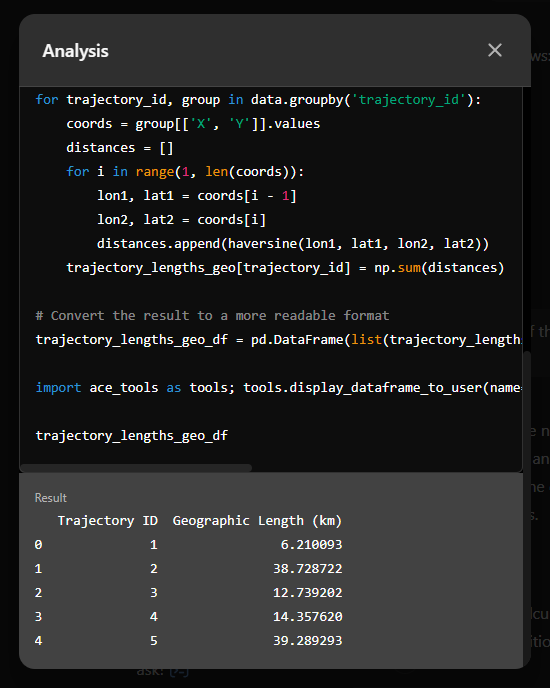
And indeed, these are close enough to the results computed using MovingPandas:


“What about plots?” I hear you ask.
For a first try, not bad at all:
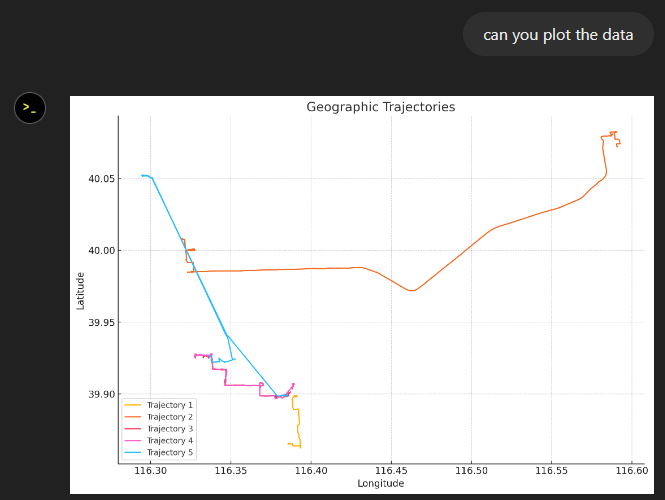
Let’s see if we can push it further:

Looks like poor Data Analyst ended up in geospatial library dependency hell

It’s interesting to watch it try find a solution.
Alas, no background map appears:
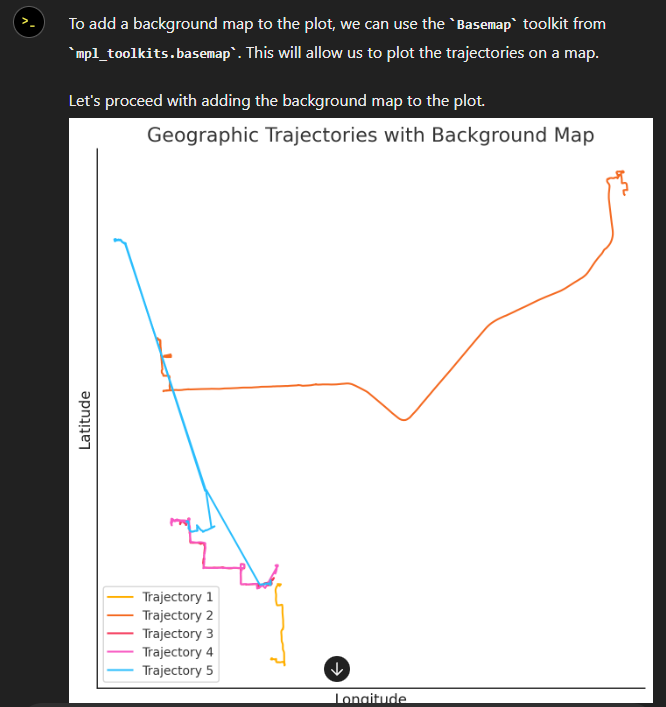
Not giving up yet :)
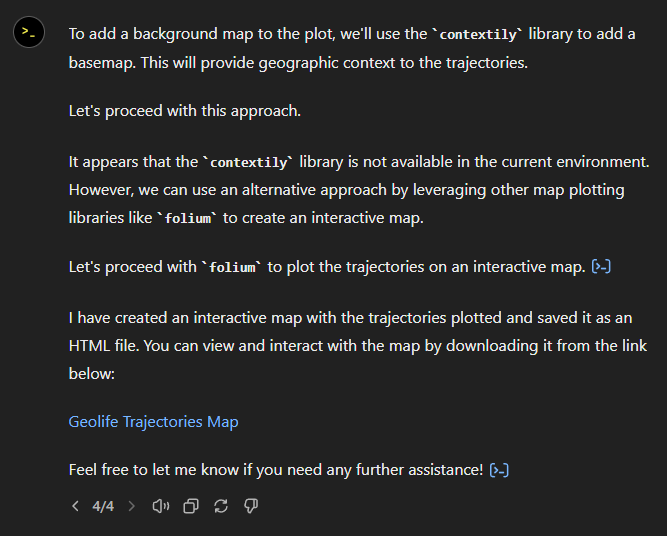
Woah, what happened here? It claims it created an interactive map in an HTML file.
And indeed it did:
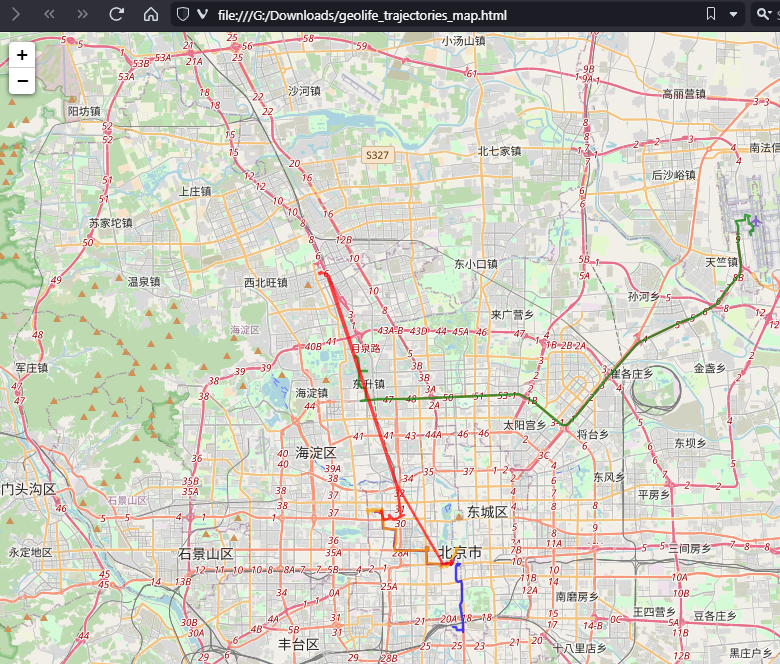
This has been a very interesting experiment for me with many highs and lows. The whole process is a bit hit and miss. But when it does work, it’s fun.
I wasn’t sure what to expect with regards to Data Analyst’s spatial data processing capabilities. Looks like there are enough examples in its training data to find solutions for the basic trajectory analysis problems I asked it solve today, eventually, at least.
What’s the conclusion? Most AI marketing videos are severely overselling the capabilities of these tools. However, that doesn’t mean that they are completely useless, either. I’m looking forward to seeing the age of smaller open source models specifically trained for geospatial analysis to finally make it unnecessary for humans to memorize data analysis library syntax.
-
sur gvSIG Team: Algo más que software
Publié: 30 May 2024, 2:25pm CEST
Recientemente, han otorgado a gvSIG el primer Premio Nacional de Ciencias Geográficas. Un premio que se suma a la larga lista de premios recibidos y que no hace otra cosa que certificar que, sin lugar a duda, gvSIG es uno de los referentes internacionales en materia de Geomática y Geolocalización.
gvSIG tuvo su origen en 2004 en la Generalitat Valenciana. Bueno, realmente en 2004 fue cuando se liberó la primera versión del software de escritorio. La idea empezó a gestarse a finales de 2002.
Un proyecto que empezó siendo un software de escritorio y que hoy se ha convertido en una Suite que permite la gestión de integral de la información geográfica. Junto al inicial cliente de escritorio está el cliente web y la solución para dispositivos móviles; pero esto último que estoy diciendo ya os lo sabéis muy bien los asiduos de este blog.
Por mi parte, hace ya varios años que no estoy vinculado profesionalmente ni a gvSIG ni a trabajos en el ámbito de la geolocalización. Sin embargo, no ocurre así con la componente emocional. Es imposible desligarme de un proyecto que contribuí a poner en marcha desde sus orígenes y a los que he dedicado tantos años de mi vida.
Gracias a gvSIG he podido participar en numerosos congresos y sesiones de trabajo por diferentes lugares del mundo y de España. O que decir de las jornadas internacionales de gvSIG que se celebran todos los años en Valencia y de las que ya se han realizado 19 convocatorias.
Toda esta actividad me ha regalado el privilegio de conocer a mucha, pero que a mucha gente de todo el mundo. Una amplia red de personas con las que hemos colaborado sobre todo en base a unos principios compartidos.
Y es ahora, en el séptimo párrafo cuando llego a lo que realmente quería comentar. Si es que menudo rollo tengo
 . Recuerdo que en sus inicios se hablaba mucho de los valores de gvSIG. Los más antiguos posiblemente recordaran eso de “Más, mejor y de una forma más justa” “Un modelo de producción basado en la colaboración y en la solidaridad”, “conocimiento compartido vs especulación con conocimiento adquirido” etc.
. Recuerdo que en sus inicios se hablaba mucho de los valores de gvSIG. Los más antiguos posiblemente recordaran eso de “Más, mejor y de una forma más justa” “Un modelo de producción basado en la colaboración y en la solidaridad”, “conocimiento compartido vs especulación con conocimiento adquirido” etc.En la evolución del proyecto cada vez se ha sido menos explícito con estos principios y se ha focalizado más en las dimensiones técnica y comercial. Algo por otra parte que considero natural. Pero sí recuerdo que esos valores eran parte fundamental del pegamento que fue constituyendo la red de amigos y colaboradores de gvSIG. Desde aquella gente que está más próxima al núcleo hasta aquellos colaboradores más puntuales.
Y es que no tengo ninguna duda que estos valores forman parte del ADN de la familia gvSIG. Esto, que algunos llaman capital humano, es el principal activo del proyecto. De ahí, mi alegría y trasladar mi felicitación al equipo de gvSIG por este éxito, que es uno más de los muchos recibidos y de los muchos por recibir.
-
sur Mappery: Paris, immersive experience
Publié: 30 May 2024, 11:00am CEST
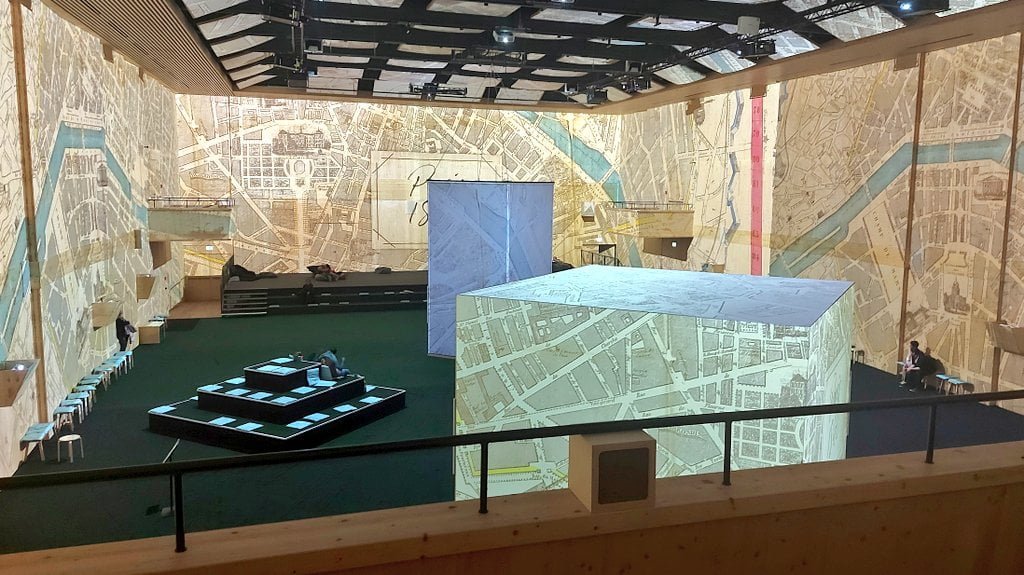
Simon Landauer shared this picture from an immersive experience in Paris
MapsintheWild Paris, immersive experience
-
sur Oslandia: (Fr) Topographie et topologie dans et autour de QGIS
Publié: 30 May 2024, 9:16am CEST
Since 2018 and the arrival of Loïc Bartoletti, Oslandia has accelerated its focus on topography and topology within and around QGIS.
Two questions have driven this focus:
- How to draw directly in GIS by integrating drawing tools inspired by the CAD world into QGIS.
- How to integrate plugins for topographic calculations directly into QGIS.
To address this, Oslandia has worked on several fronts: training, developing open-source plugins, and improvements in QGIS.
1- PluginsThe following plugins were developed by Oslandia or partners, with contributions from Oslandia:
- landsurveycodesimport : [https:]]
A plugin for surveyors working with the point coding methodology in topography. - QompliGIS : [https:]]
A tool to ensure your dataset or plan complies with a specification. - Total Open Station : [https:]]
An open-source project initiated by Italian and French archaeologists, it is a tool to convert various formats of survey field books. - Topaze : [https:]]
A topometric calculation tool developed with Jean-Marie Arsac (Azimut). It was a proof of concept that such calculations can be done within a GIS.
These plugins can be used at different stages of a project. They can be used all together or only those needed and integrated into workflows.
2- Improvements on QGISOslandia also focuses on improving the core of QGIS. Last years, our teams have worked on:
— Integration of shape tools: circles, ellipses, rectangles, regular polygons, etc.
— Improvement of snapping tools.
— Enhancement of Z and M coordinate support.
— Improvement of topological tools (relationships between geometries).Coming soon is the possibility to use geometry and topology validation and correction plugins directly in QGIS processing tools, developed by Jacky Volpès and Loïc Bartoletti.
3- TrainingOslandia is QUALIOPI certified and offers a training program around QGIS and QField:
- Drawing: Transition from CAD to GIS with QGIS: https://oslandia.com/formations/qgis3-dessiner-avec-qgis/
- Topography with QGIS (LSCI, Topaze, QompliGIS, Total Open Station)
- QField Training
- Deployment of QField Cloud
« In 2023, 89 people were trained by Oslandia, who recommend our training at 90.9%.»
4- And QField ?Since our partnership with OPENGIS.ch, Oslandia offers QField Cloud server deployment services, training, and QField support.
5- Coming Soon!Several technical posts are being prepared: how to open CAD files in a GIS? What are the differences between QField and LSCI? You will find them on our website in the coming weeks.

Additionally, we are preparing a white paper on the topic of migrating from CAD to QGIS, which we should release in September.
Stay tuned!
-
sur QGIS Blog: Felt renews their Flagship-level Sustaining Membership
Publié: 30 May 2024, 8:55am CEST
We’re delighted to announce Felt’s continued flagship-level sustaining membership of QGIS. Felt’s contributions will allow us to continuously improve QGIS’ functionality and documentation, as well as the QGIS project infrastructure, including our 2024 Grant Programme.
In addition to their membership, Felt is releasing a new version of the “Add To Felt” QGIS plugin. Developed by the talented team at North Road, the plugin makes it easy to upload your data from QGIS to the web, where you can share it with colleagues and clients. The newest release includes raster data support and more robust preservation of styles from QGIS to Felt. This enables seamless integration and a flexible workflow between your desktop and the web.
Don’t miss your chance to meet Felt’s team presenting “Add To Felt” at tomorrow’s QGIS Open Day.
Felt is the first user-friendly, collaboration tool for making and sharing the maps that drive your business. Felt makes it easy to visualize your data and communicate across teams quickly. Learn more at felt.com.
-
sur Are these are the safest streets in the world?
Publié: 30 May 2024, 8:05am CEST par Keir Clarke
Vision Zero is a global strategy aimed at eliminating all traffic fatalities. It is a vision built on the principle that the loss of life from road traffic accidents is unacceptable and preventable. Unfortunately many people believe that achieving zero road fatalities is impossible, especially in urban environments. The DEKRA Vision Zero Map not only shows that the Vision Zero goal is
-
sur Oslandia: (Fr) Plugin QGIS French Locator Filter 1.1.0 : API Photon et personnalisation avancée !
Publié: 29 May 2024, 6:52pm CEST
Sorry, this entry is only available in French.
-
sur Mappery: London dressing gown
Publié: 29 May 2024, 11:00am CEST
-
sur gvSIG Team: Premio Nacional de Ciencias Geográficas… agradecimientos
Publié: 29 May 2024, 9:03am CEST
Estamos sobrepasados emocionalmente por el número de agradecimientos y apoyos recibidos al darse a conocer que la Asociación gvSIG ha recibido el primer Premio Nacional de Ciencias Geográficas que se otorga en España.

Sin duda este premio está compuesto de muchos pedacitos, de muchas organizaciones y personas que han ido sumando a este proyecto. Este post quiere agradecer a algunas de estas entidades que han dado su apoyo a la candidatura de la Asociación gvSIG en una lista que tiende a infinito. ¡Gracias!
Universidad Autónoma del Estado de México (UAEM), Universidad Nacional de Misiones de Argentina (UNaM), Universidad Católica de la Santísima Concepción de Chile (UCSC), Instituto Tecnológico de Informática (ITI), Gaia-X, Centro de Investigação em Ciências Geo-Espaciais (CICGE) – Faculdade de Ciências da Universidade do Porto, North Carolina State University (NC State University), Universidad Politécnica de Madrid (UPM), Massachusetts Institute of Technology (MIT), Universidad Politécnica de Cartagena (UPCT), University of New Hampshire, Universidad Central “Marta Abreu” de Las Villas – Cuba, Asamblea de Cooperación por la Paz (ACPP), Instituto de Geografía de la Universidad de Buenos Aires, Centro de Investigaciones en Geografía Ambiental de la Universidad Nacional Autonóma de México (UNAM), Colegio Profesional de Delineantes y Diseñadores Te?nicos de Andalucía (CODTA), European Commission open source programme office, Universitat Jaume I de Castellón, Infraestructura de Datos Espaciales del Uruguay, Institute of Applied Physics (IFAC) – National Research Council (CNR) de Italia, Ordnance Survey (United Kingdom National Mapping Agency), Universidad Nacional de General Sarmiento de Argentina, Open Source Geospatial Foundation (OSGeo), Diputación de Albacete, Laberit Sistemas, DISID Corporation, SCOLAB Software Colaborativo, Ayuntamiento de Talavera de la Reina, Universidad Don Bosco de El Salvador, Universitat de València, Green Urban Data, eGeoMapping, Revista Internacional de Geomática y Ciencias de la Tierra MAPPING, Grupo MERCATOR: Tecnologías de la GeoInformación y Agentes inteligentes, Universidad Nacional de Moreno, Instituto Federal do Pará de Brasil, Observatorio de Estudios sobre Convivencia y Seguridad Ciudadana – Gobierno de la provincia de Córdoba de Argentina, Universidad de Santiago de Chile, Universidad de La Laguna, Universidade da Coruña, Universidad de Coimbra – Portugal, Instituto Panamericano de Geografía e Historia (IPGH), Mundialis GmbH & Co, Kalios Geospatial Technologies – India, Ayuntamiento de Castellón, Consorcio Provincial de Bomberos de Valencia (CPBV), Smart to People Solutions, Comunidade Intermunicipal do Alto Tâmega e Barroso, Tresca Ingeniería, Avansig, Intendencia de Montevideo – Uruguay, Ayuntamiento de Valencia, Instituto Nacional de Estadística y Geografía de México (INEGI), Conselleria de Medio Ambiente, Agua, Infraestructuras y Territorio de la Generalitat Valenciana, Washington State Department of Transportation, Pavapark Movilidad, Innovación, Cooperación, Cartografía y Territorio (iCarto), Politecnico Milano, Ayuntamiento de Cartagena, Istanbul University, Ayuntamiento de Albacete, Universitat Politècnica de Catalunya (UPC), Universidad de las Azores, Fundación Forjando Futuros, Universidad de Costa Rica, Ion Creanga State Pedagogical University – República de Moldavia, Sociedad de Ingenieros Geodestas, Geomáticos y Agrimensores de Venezuela (SIGGMA), Asociación Española de Geómetras Expertos (GEX), Ayuntamiento de Úbeda, Empresa Brasileira de Pesquisa Agropecuária (EMBRAPA), GIZ cono Sur, Universidad de Playa Ancha – Chile, LandNetwork GmbH, Universitat Politècnica de València, Ajuntament d’Onda, ASECRIM, Laboratorio Internacional de Tecnología e Investigación Espacial (ISTAR) – México, Gobierno de la República Dominicana, Universidad Regional Amazónica Ikiam, Comunidad gvSIG Uruguay, Confederación Empresarial de la Comunitat Valenciana (CEV), Ayuntamiento de l’Eliana, IdeasG – Perú, Hímaco (História, Mapas e Computadores) – Universidade Federal de São Paulo (UFSP), Instituto de Geografía UNAM, Instituto Valenciano de Competitividad Empresarial (IVACE), Mancomunitat del Pla de Mallorca, DALEPH, Alkante – Francia, Geospatial Enabling Technologies, Universidad Filadelfia de México, Geomática del Golfo, Université Rennes 2 – Francia, Universitat Oberta de Catalunya, Infraestructura de Datos Espaciales de Santa Fe (IDESF), Asociación para la prevención de incendios forestales (PREVIFOR), Universidad Internacional de Valencia (VIU), Universidad de Castilla – La Mancha (UCLM), Map4Business, GAUSSGEO Geotecnologia e Engenharia LTDA, Intendencia Departamental de Durazno, NISR, VinfoVAL, Geodireito – Planejamento e Regulação Ltda, Governo do Estado Tocantins – Brasil, Ajuntament d’Alzira, Universidad de Belgrano, Universidad de las Fuerzas Armadas ESPE – Ecuador, MundoGEO, Ajuntament de Torrent, Indromeda, Corredor Mediterráneo del Gobierno de España (MITMA-Adif), Programa Iberoamericano de Ciencia y Tecnología para el Desarrollo (CYTED), Instituto Tecnológico de Canarias, Alumni UPV, Universidad de La Rioja, Diputació de Barcelona, Geoscan Consultoría, Universidad Autonóma de Sinaloa,…
-
sur The Loss of the Great American Grasslands
Publié: 29 May 2024, 8:07am CEST par Keir Clarke
The Cornell Lab of Ornithology and the Act for Grasslands. have teamed up to map the loss of grasslands in the United States. Over 2 million acres of American grasslands are lost on average every year. The result of which has a devastating effect on American wildlife. Using historical satellite records Map for Grasslands has tracked grassland loss in the USA over the last 30 years. By
-
sur OPENGIS.ch: The PostgreSQL Connection Service File and Why We Love It
Publié: 28 May 2024, 3:18pm CEST
The PostgreSQL Connection Service File
What is the Connection Service File?pg_service.confis nothing new. It has existed for quite some time and maybe you have already used it sometimes too. But not only the new QGIS plugin PG service parser is a reason to write about our love for this file, as well we generally think it’s time to show you how it can be used for really cool things.The Connection Service File allows you to save connection settings for each so-called “service” locally.
So when you have a database called
gison a local PostgreSQL with port5432and username/password isdocker/dockeryou can store this as a service calledmy-local-gis.
[my-local-gis]# Local GIS Database for Testing purposeshost=localhost port=5432 dbname=gis user=docker password=docker
This Connection Service File is called
pg_service.confand is by client applications (such as psql or QGIS) generally found directly in the user directory. In Windows it is then found in the user’s application directorypostgresql.pg_service.conf. And in Linux it is by default located directly in the user’s directory~/.pg_service.conf.But it doesn’t necessarily have to be there. The file can be anywhere on the system (or on a network drive) as long as you set the environment variable
PGSERVICEFILEaccordingly:export PGSERVICEFILE=/home/dave/connectionfiles/pg_service.confOnce you have done this, the client applications will search there first – and find it.
If the above are not set, there is also another environment variable
PGSYSCONFDIRwhich is a folder which is searched for the filepg_service.conf.Once you have this, the service name can be used in the client application. That means in psql it would look like this:
~$ psql service=my-local-gis psql (14.11 (Ubuntu 14.11-0ubuntu0.22.04.1), server 14.5 (Debian 14.5-1.pgdg110+1)) SSL connection (protocol: TLSv1.3, cipher: TLS_AES_256_GCM_SHA384, bits: 256, compression: off) Type "help" for help. gis=#And in QGIS like this:

If you then add a layer in QGIS, only the name of the service is written in the project file. Neither the connection parameters nor username/password are saved. In addition to the security aspect, this has various advantages, more on this below.
But you don’t have to pass all of these parameters to a service. If you only pass parts of them (e.g. without the database), then you have to pass them when the connection is called:
$psql "service=my-local-gis dbname=gis" psql (14.11 (Ubuntu 14.11-0ubuntu0.22.04.1), server 14.5 (Debian 14.5-1.pgdg110+1)) SSL connection (protocol: TLSv1.3, cipher: TLS_AES_256_GCM_SHA384, bits: 256, compression: off) Type "help" for help. gis=#You can also override parameters. If you have a database
gisconfigured in the service, but you want to connect the database web, you can specify the service and explicit the database:$psql "service=my-local-gis dbname=web" psql (14.11 (Ubuntu 14.11-0ubuntu0.22.04.1), server 14.5 (Debian 14.5-1.pgdg110+1)) SSL connection (protocol: TLSv1.3, cipher: TLS_AES_256_GCM_SHA384, bits: 256, compression: off) Type "help" for help. web=#Of course the same applies to QGIS.
And regarding the environment variables mentioned, you can also set a standard service.
export PGSERVICE=my-local-gisParticularly pleasant in daily work with always the same database.
And why is it particularly cool?$ psql psql (14.11 (Ubuntu 14.11-0ubuntu0.22.04.1), server 14.5 (Debian 14.5-1.pgdg110+1)) SSL connection (protocol: TLSv1.3, cipher: TLS_AES_256_GCM_SHA384, bits: 256, compression: off) Type "help" for help. gis=#There are several reasons why such a file is useful:
- Security: You don’t have to save the connection parameters anywhere in the client files (e.g. QGIS project files). Keep in mind that they are still plain text in the service file.
- Decoupling: You can change the connection parameters without having to change the settings in client files (e.g. QGIS project files).
- Multi-User: You can save the file on a network drive. As long as the environment variable of the local systems points to this file, all users can access the database with the same parameters.
- Diversity: You can use the same project file to access different databases with the same structure if only the name of the service remains the same.
For the last reason, here are three use cases.
Support-CaseSomeone reports a problem in QGIS on a specific case with their database. Since the problem cannot be reproduced, they send us a DB dump of a schema and a QGIS project file. The layers in the QGIS project file are linked to a service. Now we can restore the dump on our local database and access it with our own, but same named, service. The problem can be reproduced.
INTERLISWith INTERLIS the structure of a database schema is precisely specified. If e.g. the canton has built the physical database for it and configured a supernice QGIS project, they can provide the project file to a company without also providing the database structure. The company can build the schema based on the INTERLIS model on its own PostgreSQL database and access it using its own service with the same name.
Test/Prod SwitchingYou can access a test and a production database with the same QGIS project if you have set the environment variable for the connection service file accordingly per QGIS profile.
You create two connection service files.
The one to the test database
/home/dave/connectionfiles/test/pg_service.conf:[my-local-gis] host=localhost port=54322 dbname=gis-testAnd the one for the production database
/home/dave/connectionfiles/prod/pg_service.conf:[my-local-gis] host=localhost port=54322 dbname=gis-productiveIn QGIS you create two profiles “Test” and “Prod”:
And you set the environment variable for each profile
PGSERVICEFILEwhich should be used (in the menu Settings > Options… and there under System scroll down to Environmentor
If you now use the service
The authentication configurationmy-local-gisin a QGIS layer, it connects the databaseprodin the “Prod” profile and the databasetestin the “Test” profile.Let’s have a look at the authentication. If you have the connection service file on a network drive and make it available to several users, you may not want everyone to access it with the same login. Or you generally don’t want any user information in this file. This can be elegantly combined with the authentication configuration in QGIS.
If you want to make a QGIS project file available to multiple users, you create the layers with a service. This service contains all connection parameters except the login information.
This login information is transferred using QGIS authentication.
You also configure this authentication per QGIS profile we mentioned above. This is done via Menu Settings > Options… and there under Authentication:
(or directly where you create the PostgreSQL connection)
If you add such a layer, the service and the ID of the authentication configuration are saved in the QGIS project file. This is in this case
mylogin. Of course this name must be communicated to the other users so that they can also set the ID for their login tomylogin.Of course, you can use multiple authentication configurations per profile.
QGIS PluginAnd yes, there is now a great plugin to configure these services directly in QGIS. This means you no longer have to deal with text-based INI files. It’s called PG service parser:
It finds the connection service file according to the mentioned environment variables
PGSERVICEFILEorPGSYSCONFDIRor at its default location.As well it’s super easy to create new services by duplicating existing ones.
And for the Devs
And what would a blog post be without some geek food? The back end of this plugin is published on PYPI and can be easily installed with
pip install pgserviceparserand then be used in Python.For example to list all the service names.
>>> import pgserviceparser >>> pgserviceparser.service_names() ['my-local-gis', 'another-local-gis', 'opengisch-demo-pg']Optionally you can pass a config file path. Otherwise it gets it by the mentioned mechanism.
Or to receive the configuration from the given service name as a dict.
>>> pgserviceparser.service_config('my-local-gis') {'host': 'localhost', 'port': '54322', 'dbname': 'gis', 'user': 'docker', 'password': 'docker'}There are some more functions. Check them out here on GitHub or in the documentation.
Well thenWe hope you share our enthusiasm for this beautiful file – at least after reading this blog post. And if not – feel free to tell us why you don’t in the comments

-
sur GeoSolutions: GeoSolutions presenting at FOSS4G 2024 Europe in Tartu (Estonia)
Publié: 28 May 2024, 2:53pm CEST
You must be logged into the site to view this content.
-
sur gvSIG Team: Transportes concede el primer Premio Nacional de Ciencias Geográficas a la asociación gvSIG
Publié: 28 May 2024, 2:44pm CEST

Reproducimos la nota de prensa oficial:
El Ministerio de Transportes y Movilidad Sostenible ha galardonado a la asociación gvSIG con el primer Premio Nacional de Ciencias Geográficas, que recompensa a personas o entidades que hayan contribuido de forma especial o mediante su actuación singular o trayectoria profesional al campo de las Ciencias Geográficas. La resolución de concesión se publicará próximamente en el Boletín Oficial del Estado (BOE).
Este galardón, con una dotación económica de 20.000 euros, es instruido por el Centro Nacional de Información Geográfica a iniciativa del Consejo Superior Geográfico, órgano de dirección del Sistema Cartográfico Nacional, y trata de poner en valor la aportación, innovación e impacto de los avances conseguidos en la producción, actualización y uso cotidiano de la información geográfica, sus infraestructuras y los productos y servicios derivados de ella.
La Asociación gvSIG es una entidad española sin ánimo de lucro, dedicada a la investigación, innovación y desarrollo de tecnologías de software libre y código abierto relacionadas con las ciencias geográficas. Basándose en valores como la colaboración, la solidaridad y el conocimiento compartido, se ha convertido en un referente internacional, siendo su catálogo de soluciones tecnológicas para la gestión de información geográfica utilizado en la práctica totalidad del planeta.
La Asociación gvSIG ha contribuido notablemente a la comunidad de código abierto y a las tecnologías geográficas, así como al impulso de estándares, desarrollando una serie de soluciones de amplio uso que han permitido constituir un nuevo modelo de negocio exitoso que permite a pequeñas y medianas empresas españolas ofrecer servicios y proyectos en diversos países.
De este modo, ha realizado proyectos en más de treinta países, fomentando la internacionalización de empresas españolas. Entre los ejemplos de grandes proyectos se encuentran la Infraestructura de Datos Espaciales de Uruguay, la IDE del Estado de Tocantins en Brasil, la aplicación para identificación de riesgos en los desplazamientos de los Cascos Azules en Malí o la IDE de Repsol para la gestión de proyectos de energías renovables, el Atlas de Expansión Urbana desarrollado para ONU-Habitat o el actual desarrollo del sistema de gestión de Catastro Multipropósito de la República Dominicana.
Aportación a las Ciencias GeográficasEl Premio Nacional de Ciencias Geográficas reconoce así a esta asociación su aportación e innovación, individual y colectiva, en el campo de las ciencias e ingeniería geográficas, la geomática, la cartografía y la información geoespacial, y su trascendencia, e impacto en el conjunto de las administraciones públicas y de la sociedad en general.
El jurado que ha informado el otorgamiento del galardón ha adoptado su decisión por unanimidad, tras valorar los méritos aportados por un total de catorce candidaturas que elevaron las deliberaciones a un nivel de gran excelencia. Ha estado presidido por el subsecretario de Transportes y Movilidad Sostenible y presidente del Consejo Superior Geográfico, actuando como vicepresidente el director general del IGN y presidente del CNIG, y contando como miembros a los representantes de los órganos de gobierno del Consejo Superior Geográfico y de colegios profesionales en el ámbito de las ciencias geográficas.
-
sur Mappery: Maps rock!
Publié: 28 May 2024, 11:00am CEST
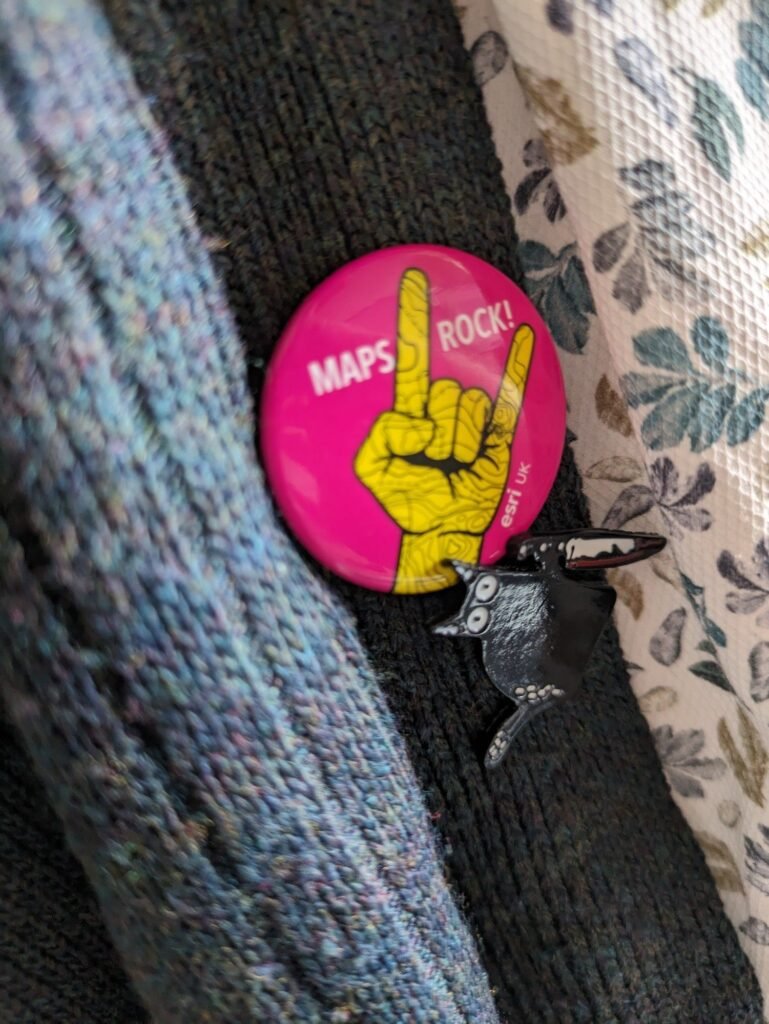
In case there would be any doubts, Maps Rock! Thanks, Dean, for sharing this badge.
MapsintheWild Maps rock!
-
sur The Death of Japantown
Publié: 28 May 2024, 10:56am CEST par Keir Clarke
I'm a little late to this one but last month the San Francisco Chronicle published a superb story map documenting the effect of America's internment of Japanese American citizens in World War II on San Francisco's Japantown District.Following the Japanese attack on Pearl Harbor in 1941, President Franklin D. Roosevelt signed Executive Order 9066. This order led to the forced removal and
-
sur OPENGIS.ch: The PostgreSQL Connection Service File and Why We Love It
Publié: 28 May 2024, 6:55am CEST
The PostgreSQL Connection Service File
What is the Connection Service File?pg_service.confis nothing new. It has existed for quite some time and maybe you have already used it sometimes too. But not only the new QGIS plugin PG service parser is a reason to write about our love for this file, as well we generally think it’s time to show you how it can be used for really cool things.The Connection Service File allows you to save connection settings for each so-called “service” locally.
So when you have a database called
gison a local PostgreSQL with port5432and username/password isdocker/dockeryou can store this as a service calledmy-local-gis.# Local GIS Database for Testing purposes [my-local-gis] host=localhost port=5432 dbname=gis user=docker password=dockerThis Connection Service File is called
pg_service.confand is by client applications (such as psql or QGIS) generally found directly in the user directory. In Windows it is then found in the user’s application directorypostgresql.pg_service.conf. And in Linux it is by default located directly in the user’s directory~/.pg_service.conf.But it doesn’t necessarily have to be there. The file can be anywhere on the system (or on a network drive) as long as you set the environment variable
PGSERVICEFILEaccordingly:export PGSERVICEFILE=/home/dave/connectionfiles/pg_service.confOnce you have done this, the client applications will search there first – and find it.
If the above are not set, there is also another environment variable
PGSYSCONFDIRwhich is a folder which is searched for the filepg_service.conf.Once you have this, the service name can be used in the client application. That means in psql it would look like this:
~$ psql service=my-local-gis psql (14.11 (Ubuntu 14.11-0ubuntu0.22.04.1), server 14.5 (Debian 14.5-1.pgdg110+1)) SSL connection (protocol: TLSv1.3, cipher: TLS_AES_256_GCM_SHA384, bits: 256, compression: off) Type "help" for help. gis=#And in QGIS like this:

If you then add a layer in QGIS, only the name of the service is written in the project file. Neither the connection parameters nor username/password are saved. In addition to the security aspect, this has various advantages, more on this below.
But you don’t have to pass all of these parameters to a service. If you only pass parts of them (e.g. without the database), then you have to pass them when the connection is called:
$psql "service=my-local-gis dbname=gis" psql (14.11 (Ubuntu 14.11-0ubuntu0.22.04.1), server 14.5 (Debian 14.5-1.pgdg110+1)) SSL connection (protocol: TLSv1.3, cipher: TLS_AES_256_GCM_SHA384, bits: 256, compression: off) Type "help" for help. gis=#You can also override parameters. If you have a database
gisconfigured in the service, but you want to connect the database web, you can specify the service and explicit the database:$psql "service=my-local-gis dbname=web" psql (14.11 (Ubuntu 14.11-0ubuntu0.22.04.1), server 14.5 (Debian 14.5-1.pgdg110+1)) SSL connection (protocol: TLSv1.3, cipher: TLS_AES_256_GCM_SHA384, bits: 256, compression: off) Type "help" for help. web=#Of course the same applies to QGIS.
And regarding the environment variables mentioned, you can also set a standard service.
export PGSERVICE=my-local-gisParticularly pleasant in daily work with always the same database.
And why is it particularly cool?$ psql psql (14.11 (Ubuntu 14.11-0ubuntu0.22.04.1), server 14.5 (Debian 14.5-1.pgdg110+1)) SSL connection (protocol: TLSv1.3, cipher: TLS_AES_256_GCM_SHA384, bits: 256, compression: off) Type "help" for help. gis=#There are several reasons why such a file is useful:
- Security: You don’t have to save the connection parameters anywhere in the client files (e.g. QGIS project files). Keep in mind that they are still plain text in the service file.
- Decoupling: You can change the connection parameters without having to change the settings in client files (e.g. QGIS project files).
- Multi-User: You can save the file on a network drive. As long as the environment variable of the local systems points to this file, all users can access the database with the same parameters.
- Diversity: You can use the same project file to access different databases with the same structure if only the name of the service remains the same.
For the last reason, here are three use cases.
Support-CaseSomeone reports a problem in QGIS on a specific case with their database. Since the problem cannot be reproduced, they send us a DB dump of a schema and a QGIS project file. The layers in the QGIS project file are linked to a service. Now we can restore the dump on our local database and access it with our own, but same named, service. The problem can be reproduced.
INTERLISWith INTERLIS the structure of a database schema is precisely specified. If e.g. the canton has built the physical database for it and configured a supernice QGIS project, they can provide the project file to a company without also providing the database structure. The company can build the schema based on the INTERLIS model on its own PostgreSQL database and access it using its own service with the same name.
Test/Prod SwitchingYou can access a test and a production database with the same QGIS project if you have set the environment variable for the connection service file accordingly per QGIS profile.
You create two connection service files.
The one to the test database
/home/dave/connectionfiles/test/pg_service.conf:[my-local-gis] host=localhost port=54322 dbname=gis-testAnd the one for the production database
/home/dave/connectionfiles/prod/pg_service.conf:[my-local-gis] host=localhost port=54322 dbname=gis-productiveIn QGIS you create two profiles “Test” and “Prod”:
And you set the environment variable for each profile
PGSERVICEFILEwhich should be used (in the menu Settings > Options… and there under System scroll down to Environmentor
If you now use the service
The authentication configurationmy-local-gisin a QGIS layer, it connects the databaseprodin the “Prod” profile and the databasetestin the “Test” profile.Let’s have a look at the authentication. If you have the connection service file on a network drive and make it available to several users, you may not want everyone to access it with the same login. Or you generally don’t want any user information in this file. This can be elegantly combined with the authentication configuration in QGIS.
If you want to make a QGIS project file available to multiple users, you create the layers with a service. This service contains all connection parameters except the login information.
This login information is transferred using QGIS authentication.
You also configure this authentication per QGIS profile we mentioned above. This is done via Menu Settings > Options… and there under Authentication:
(or directly where you create the PostgreSQL connection)
If you add such a layer, the service and the ID of the authentication configuration are saved in the QGIS project file. This is in this case
mylogin. Of course this name must be communicated to the other users so that they can also set the ID for their login tomylogin.Of course, you can use multiple authentication configurations per profile.
QGIS PluginAnd yes, there is now a great plugin to configure these services directly in QGIS. This means you no longer have to deal with text-based INI files. It’s called PG service parser:
It finds the connection service file according to the mentioned environment variables
PGSERVICEFILEorPGSYSCONFDIRor at its default location.As well it’s super easy to create new services by duplicating existing ones.
And for the Devs
And what would a blog post be without some geek food? The back end of this plugin is published on PYPI and can be easily installed with
pip install pgserviceparserand then be used in Python.For example to list all the service names.
>>> import pgserviceparser >>> pgserviceparser.service_names() ['my-local-gis', 'another-local-gis', 'opengisch-demo-pg']Optionally you can pass a config file path. Otherwise it gets it by the mentioned mechanism.
Or to receive the configuration from the given service name as a dict.
>>> pgserviceparser.service_config('my-local-gis') {'host': 'localhost', 'port': '54322', 'dbname': 'gis', 'user': 'docker', 'password': 'docker'}There are some more functions. Check them out here on GitHub or in the documentation.
Well thenWe hope you share our enthusiasm for this beautiful file – at least after reading this blog post. And if not – feel free to tell us why you don’t in the comments

-
sur Martin Davis: RelateNG Performance
Publié: 28 May 2024, 1:14am CEST
A previous post introduced a new algorithm in the JTS Topology Suite called RelateNG. It computes topological relationships between geometries using the Dimensionally-Extended 9 Intersection Model (DE-9IM) model.
This algorithm is fundamental to a large proportion of spatial queries executed in numerous geospatial environments. It would not be surprising to learn that the Relate algorithm is executed billions of times per day across the world's data centres. Given this, performance is a critical metric.
The original JTS RelateOp algorithm was hamstrung by its design, which required computing a full topology graph for each relationship evaluation. The subsequent development of PreparedGeometry provided a significant performance boost for common spatial predicates such as intersects and covers. A useful side-effect is that it is less susceptible to geometric robustness problems. However, it has some drawbacks:
- it only implements a small set of predicates
- the design does not easily extend to more complex predicates
- it does not support GeometryCollection inputs
- it is a completely separate codebase to the general-purpose RelateOp, which increases maintenance effort and increases the risk of bugs and behaviour discrepancies
The test data metrics are:- Query MultiPolygon: 461 polygons, 22,675 vertices
- Target Points: 10,000 points
 Timings
Timings
Op Intersects Intersects Prep Relate 61.7 s 21 ms RelateNG 0.1 s 19 ms
The result clearly shows the enormous improvement in the stateless case, since RelateNG does not build topology on the input polygon. The results are very similar in the prepared case. This is as expected, since both codebases run a simple Point-in-Polygon test using a cached spatial index.Line / LineThis test uses a dataset of major rivers of the continental United States. A single river mainstem is queried against a subset of river branches using the intersects and touches relationships, in stateless and prepared modes.
The test data metrics are:- Query Line: 6,975 vertices
- Target Lines: 407 lines with 47,328 vertices
 Timings (per 100 executions of the operation)
Timings (per 100 executions of the operation)
This shows the much better performance of RelateNG. RelateNG can evaluate touches in prepared mode, but the performance is similar to stateless mode, since currently indexes are not cached for Line/Line cases. This could be improved in a future release.Polygon / PolygonThis test uses data from two polygonal datasets:Op Intersects Intersects Prep Touches Touches Prep Relate 38.2 s 133 ms 36 s N/A RelateNG 1.18 s 142 ms 2.05 s 2.03 s - The Britsh Columbia Bedrock Geology polygonal coverage
- The GADM Level 2 boundaries for Canada
The test data metrics are:- GADM unit: 4,017 vertices
- Bedrock polygons: 4,318 polygon with 337,650 vertices
 Timings (per 100 executions of the operation)
Timings (per 100 executions of the operation)
Polygon / Polygon - Custom Relate PatternThe tests shows the ability of RelateNG to efficiently evaluate arbitrary Relate Intersection Matrix patterns. In this case, the pattern used is F***0****, which corresponds to a relationship which could be called "point-touches": two geometries have boundaries which intersect in only one (or more) points (dimension 0), but whose interiors do not intersect.Op Intersects Intersects Prep Covers Covers Prep Relate 61.7 s 534 ms 54.9 s 842 ms RelateNG 5.8 s 595 ms 6.4 s 943 ms
This test uses data from The GADM Level 1 boundaries for Canada. This has the advantage that Canada contains a rare example of 4 boundaries meeting at a single point (the jurisdictions of Saskatchewan, Manitoba, Northwest Territories, and Nunavut).
The test data metrics are:- GADM Canada Level 1: 13 polygons, 4,005,926 vertices
 Timings
Timings
Op F***0**** F***0**** Prep Relate 504 s N/A RelateNG 9.8 s 6.6 s
As expected, for this test RelateNG is far more performant than Relate. This is due to its ability to analyze Intersection Matrix patterns and perform only topology tests that are necessary, as well as not building a full topological structure of the inputs. The test shows the effect of caching spatial indexes in prepared mode, although stateless mode is very efficient as well. Analysis of ResultsClearly RelateNG is far more performant than Relate when running in non-prepared mode. The PreparedGeometry implementation is slightly faster (which confirms the efficiency of its original design), but not by very much. The difference may be a consequence of the general-purpose and thus more complex code and data structures in RelateNG. Closing this gap may be an area for future research.One thing is certain: the RelateNG algorithm design provides much more scope for adding case-specific optimizations. If you have a significant use case which could be improved by further targeted optimization improvements, let me know in the comments!It will be interesting to re-evaluate these tests once RelateNG is ported to GEOS. Sometimes (but not always) a C++ implementation can be significantly faster than Java, due to more opportunities for code and compiler optimization. -
sur GRASS GIS: Google Summer of Code 2024
Publié: 27 May 2024, 9:12pm CEST
Three GSoC students will be contributing to GRASS GIS this summer! We are thrilled to announce that the GRASS GIS project has three Google Summer of Code (GSoC) students this year! They will be working together with their mentors on enhancing different GRASS tools and capabilities. Let’s go briefly through some details on each project and their forseen broader impacts. Improve GRASS user experience in Jupyter Notebook Student: Riya Saxena Mentors: Anna Petrasova, Corey White The python package grass. -
sur gvSIG Team: aanguix
Publié: 27 May 2024, 6:05pm CEST
-
sur Fernando Quadro: O que é o DATUM?
Publié: 27 May 2024, 2:00pm CEST
O DATUM é um termo utilizado na área da geodésica que se refere a um sistema de referência utilizado para determinar as coordenadas geográficas na superfície da Terra. Ele é fundamental para a realização de medições precisas e confiáveis em projetos de cartografia e geoprocessamento.
 É baseado em alguns princípios fundamentais:
É baseado em alguns princípios fundamentais: Considera a Terra como um elipsoide, ou seja, um corpo sólido de formato semelhante a uma esfera achatada nos polos e alongada no equador.
Considera a Terra como um elipsoide, ou seja, um corpo sólido de formato semelhante a uma esfera achatada nos polos e alongada no equador.
 Leva em conta a gravidade terrestre, rotação da Terra e a distribuição de massa em seu interior.
Leva em conta a gravidade terrestre, rotação da Terra e a distribuição de massa em seu interior.A diferença entre um datum e outro é baseada em modelos matemáticos distintos da forma e dimensões da Terra e do fator adicional da projeção, seja por razões históricas, seja para garantir uma representação gráfica mais proporcionada; tomando como exemplo o Japão, onde usam um ponto da projeção que não está no centro da Terra, mas em algum lugar sob o Japão, isto permite uma menor distorção numa projeção de uma esfera sobre plano quando o Japão é representado, mas no entanto o uso dessa projeção para os Estados Unidos ou para o Brasil resultaria em um mapa muito estranho.
 O uso do DATUM possibilita diversos benefícios, veja:
O uso do DATUM possibilita diversos benefícios, veja: Precisão nas medições
Precisão nas medições
 Padronização global
Padronização global
 Compatibilidade com Sistemas de Posicionamento Global (GPS)
Compatibilidade com Sistemas de Posicionamento Global (GPS)
 Melhoria na precisão dos mapas
Melhoria na precisão dos mapasO DATUM apresenta diversos benefícios, no entanto, seu uso também apresenta desafios, como a necessidade de atualização constante e a complexidade dos cálculos.
O futuro do DATUM está ligado ao avanço da tecnologia, o que permitirá realizar medições ainda mais precisas e eficientes.
Gostou desse post? Conte nos comentários

-
sur Mappery: Globes at the Whitechapel Gallery
Publié: 27 May 2024, 11:00am CEST
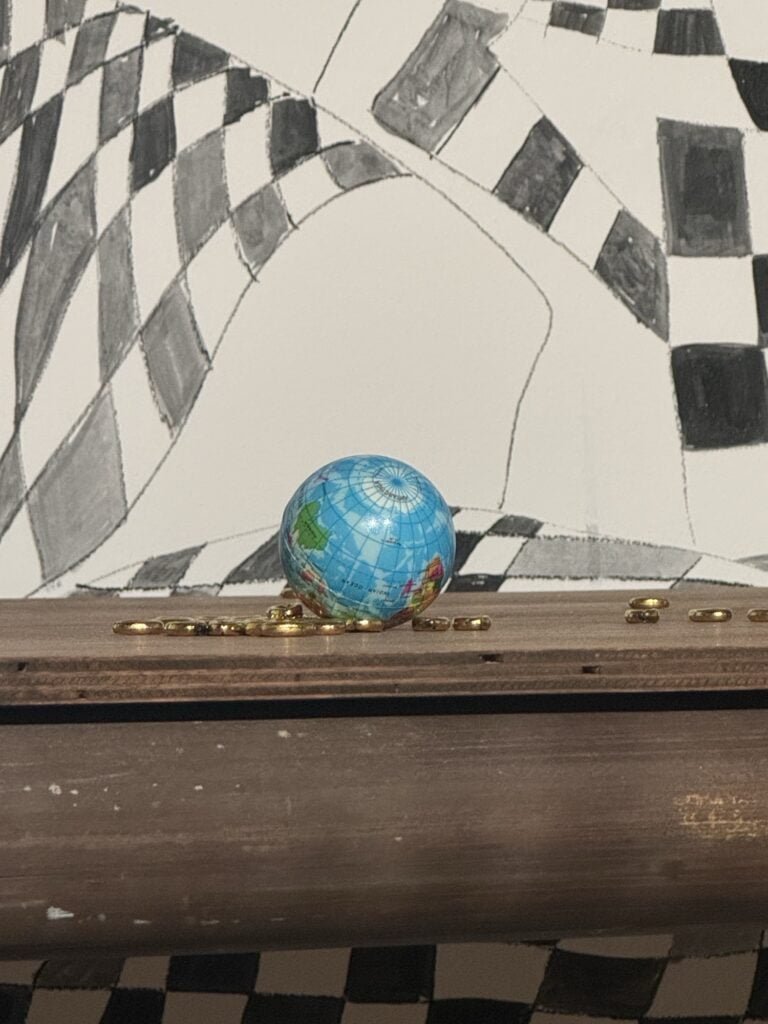
We popped into the Whitechapel Gallery yesterday and saw some uninspiring installations and performance art but as you might expect I spotted a few globes hidden in the displays.
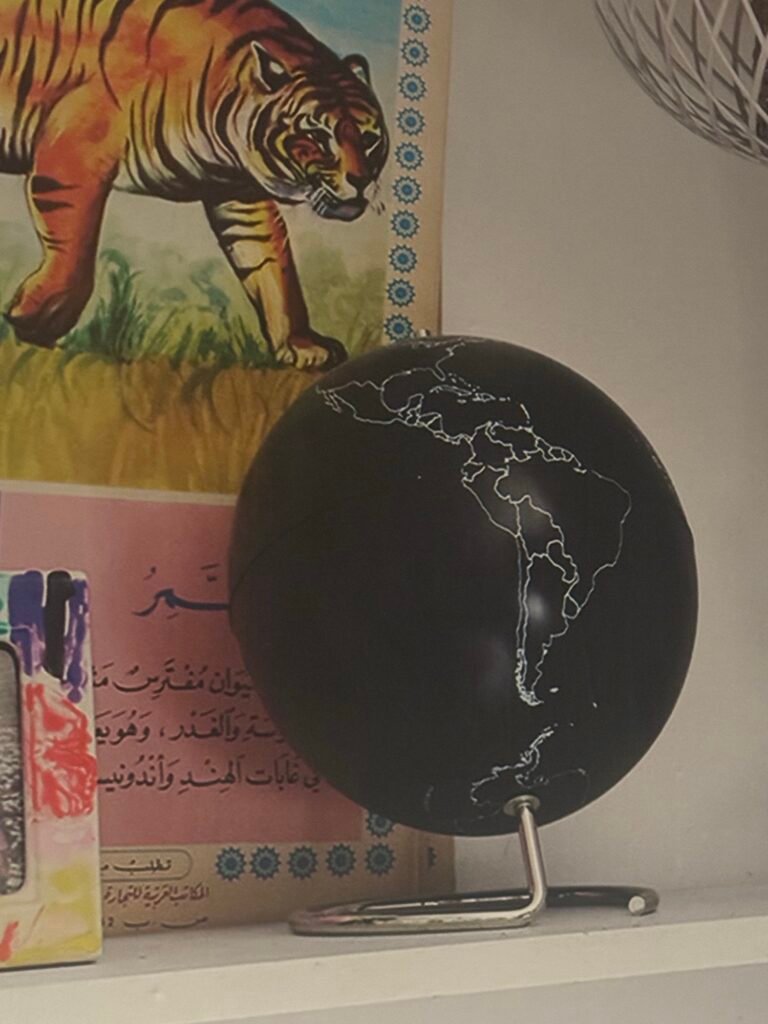
And this nice sign in the reception area
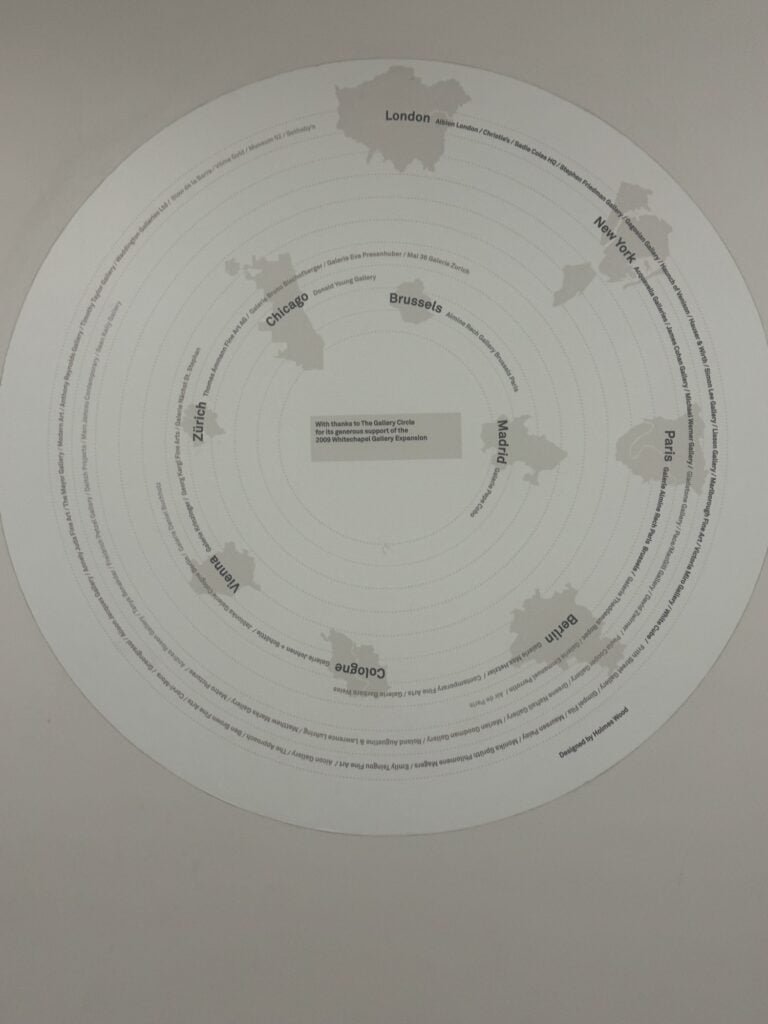
MapsintheWild Globes at the Whitechapel Gallery
-
sur The Journey of a Vampire
Publié: 27 May 2024, 8:53am CEST par Keir Clarke
On a dark night in July, 1893, Count Dracula embarked on a long, secret journey from Transylvania aboard the ill-fated ship Demeter. Unbeknownst to the unsuspecting crew of the Demeter, a malevolent force lay hidden in the ship's hold—a coffin filled with the cursed soil of Dracula's homeland, concealing the vampire lord himself.By the time the Demeter's ghostly silhouette loomed over the
-
sur Mappery: President Obama by C215
Publié: 26 May 2024, 11:00am CEST

We finish this week’s series with US President Obama. I hope you enjoyed the series. C215 has been prolific on maps and old map boards, so stay tuned; there is more to come.
C215, Christian Guemy’s website c215.fr
MapsintheWild President Obama by C215
-
sur Mappery: Ben-Gurion by C215
Publié: 25 May 2024, 11:00am CEST
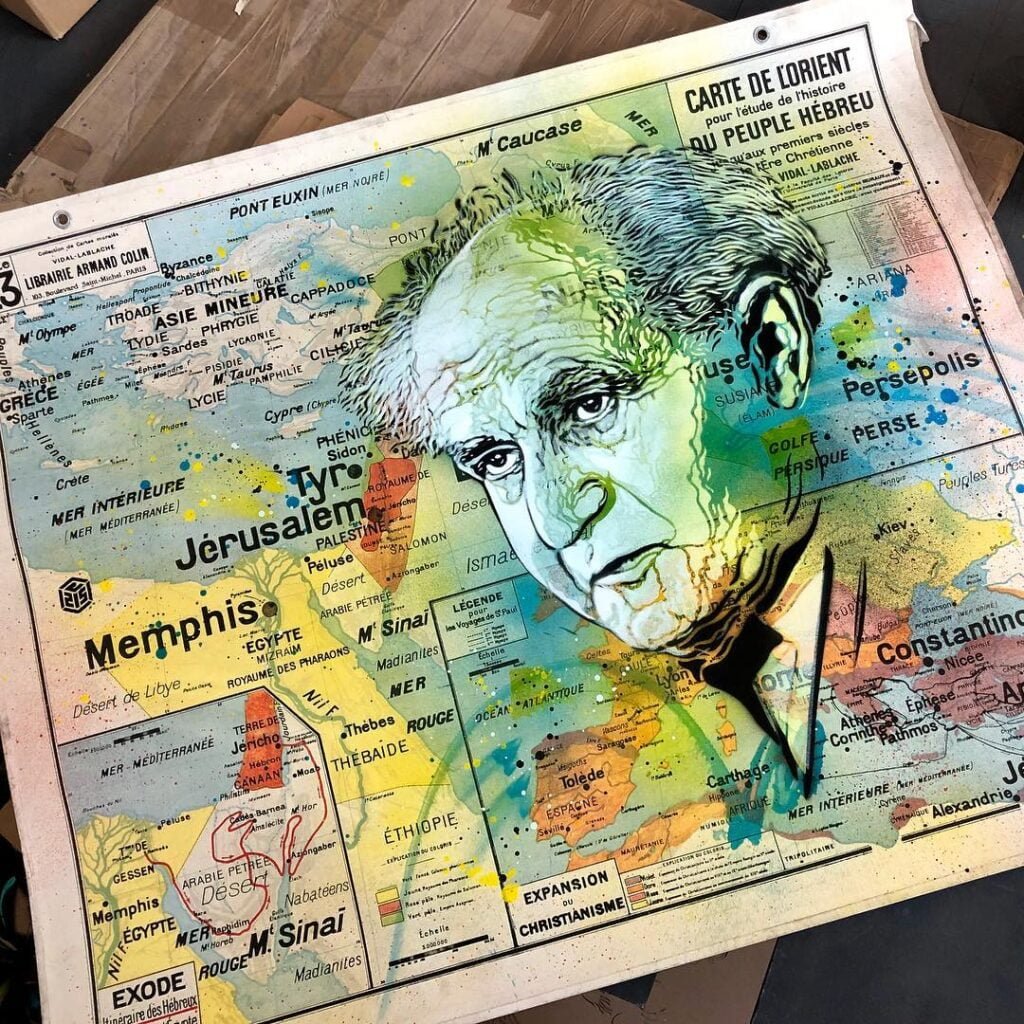
David Ben-Gurion, Israel’s first prime minister, stands resolute on a 1950s Vidal Lablache map depicting the ancient Near East and the biblical history of the Jewish people.
C215, Christian Guemy’s website c215.fr
MapsintheWild Ben-Gurion by C215
-
sur Old Maps Online
Publié: 25 May 2024, 10:06am CEST par Keir Clarke
Old Maps Online, MapTiler and the David Rumsey Map collection have launched TimeMap.org, a new interactive world map which allows you to explore the history of human civilization over the last 6,000 years. TimeMap promises to throw open the doors to the past, allowing you to explore bygone eras, trace the shifting boundaries of nations, encounter history's most powerful figures, and witness the
-
sur gvSIG Batoví: Nueva edición Curso – Concurso Geoalfabetización mediante la utilización de Tecnologías de la Información Geográfica
Publié: 24 May 2024, 9:10pm CEST

¡Vamos por el séptimo año!
El Curso – Concurso Geoalfabetización mediante la utilización de TIGs se desarrollará entre el 3 de junio y el 7 de noviembre y es organizado por la Dirección Nacional de Topografía (MTOP), la Inspección Nacional de Geografía y Geología (ANEP-DGES), Ceibal y la Universidad Politécnica de Madrid (España). Este año la iniciativa cuenta con la colaboración de la Dirección General de Educación Técnico-Profesional (UTU), la Asociación Nacional de Profesores de Geografía (ANPG) y la Universidad Central Marta Abreu de Las Villas (Cuba).
La iniciativa consta de 2 partes: primero: un curso denominado Tecnologías de la Información Geográfica y gvSIG Batoví dirigido a docentes de Enseñanza Media y Técnico-Profesional de Geografía y áreas relacionadas con el conocimiento geográfico, ambiental y social. La capacitación se desarrollará del 3 al 28 de junio en modalidad b-learning (plataforma + taller por videoconferencia).
Se entregará una certificación avalada por las instituciones organizadoras del curso, en la cual se reconocerá la participación satisfactoria de los cursillistas en la capacitación brindada (30 horas) y en el concurso posterior.
Para acceder a la certificación los inscriptos deberán completar el recorrido de los temas en la plataforma, asistir a los 3 días de taller, entregar las actividades propuestas y deberán también haber participado del concurso posterior.
Período de inscripción: del 27 de mayo al 2 de junio.
La segunda parte consiste en un concurso denominado Proyectos con Estudiantes y gvSIG Batoví. Los equipos de trabajo estarán integrados por estudiantes (de 3 a 5 alumnos) y al menos un docente de referencia (máx. 3), el cual debió participar en alguna edición del curso. Cada equipo deberá presentar un proyecto de trabajo que identifique y aborde una problemática de interés local, que posea una dimensión territorial y se enmarque en alguno de los Objetivos de Desarrollo Sostenible (ODS) 2030 de la Organización de las Naciones Unidas. Cada proyecto contará con un tutor que le proporcionará asesoría técnica y pedagógica.
En cuanto a la premiación, se seleccionarán 3 proyectos finalistas y de ellos el ganador del concurso. Los ganadores recibirán los premios propuestos por la organización y el resto de los equipos un certificado por su participación.
Dudas o consultas: batovi@ceibal.edu.uy
convocatoria-curso-tig-y-barovi-2024Descarga -
sur Mappery: Ho Chi Minh by C215
Publié: 24 May 2024, 11:00am CEST
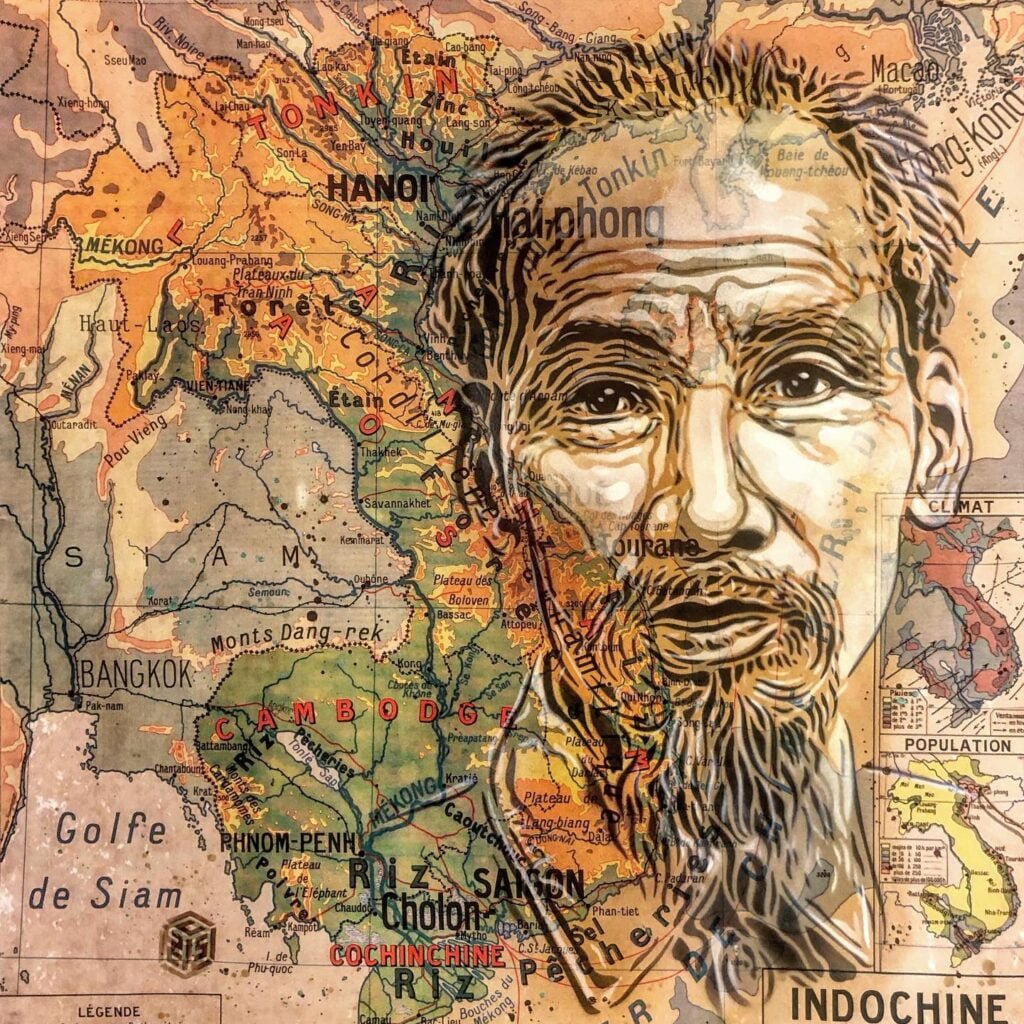
Revolutionary leader Ho Chi Minh gazes out from a vintage map of Vietnam. A symbol of resilience and national pride
C215, Christian Guemy’s website c215.fr
MapsintheWild Ho Chi Minh by C215
-
sur GeoTools Team: GeoTools 31.1 Released
Publié: 23 May 2024, 8:24pm CEST
GeoTools 31.1 released The GeoTools team is pleased to announce the release of the latest stable version of GeoTools 31.1: geotools-31.1-bin.zip geotools-31.1-doc.zip geotools-31.1-userguide.zip geotools-31.1-project.zip This release is also available from the OSGeo Maven Repository and is made in conjunction with GeoServer 2.25.1 and GeoWebCache 1.25.1. Thanks to Jody Garnett -
sur Fernando Quadro: O papel do Machine Learning no GIS
Publié: 23 May 2024, 2:00pm CEST
No domínio dos Sistemas de Informação Geográfica (GIS), o Machine Learning não é apenas uma palavra da moda, é uma força transformadora. É a chave para desbloquear todo o potencial dos dados geoespaciais, transformando conjuntos de dados vastos e complexos em insights acionáveis. Vamos nos aprofundar nos tipos de algoritmos de machine learning e suas aplicações em contextos geoespaciais.
 Aprendizagem supervisionada: A aprendizagem supervisionada é semelhante a ter um guia experiente no deserto de dados. Com conjuntos de dados rotulados, os algoritmos aprendem a prever resultados com base em exemplos anteriores. É perfeito para:
Aprendizagem supervisionada: A aprendizagem supervisionada é semelhante a ter um guia experiente no deserto de dados. Com conjuntos de dados rotulados, os algoritmos aprendem a prever resultados com base em exemplos anteriores. É perfeito para:
 Mapeamento de Habitat de Espécies: Prever onde certas espécies podem prosperar.
Mapeamento de Habitat de Espécies: Prever onde certas espécies podem prosperar.
 Categorização da Cobertura do Solo: Classificação de áreas com base na vegetação, desenvolvimento urbano ou corpos d’água.
Categorização da Cobertura do Solo: Classificação de áreas com base na vegetação, desenvolvimento urbano ou corpos d’água.
 Previsão Climática: Estimativa de padrões futuros de temperatura e precipitação.
Previsão Climática: Estimativa de padrões futuros de temperatura e precipitação. Aprendizagem não supervisionada: Algoritmos de aprendizagem não supervisionados são os exploradores intrépidos, encontrando estruturas ocultas em territórios desconhecidos de dados não rotulados. Eles se destacam em:
Aprendizagem não supervisionada: Algoritmos de aprendizagem não supervisionados são os exploradores intrépidos, encontrando estruturas ocultas em territórios desconhecidos de dados não rotulados. Eles se destacam em:
 Segmentação de imagens: Divisão de milhões de imagens de satélite em clusters significativos.
Segmentação de imagens: Divisão de milhões de imagens de satélite em clusters significativos.
 Detecção de anomalias: Identificação de padrões incomuns que possam indicar mudanças ambientais ou desenvolvimento urbano.
Detecção de anomalias: Identificação de padrões incomuns que possam indicar mudanças ambientais ou desenvolvimento urbano. Aprendizado profundo: O aprendizado profundo se aprofunda nos dados, usando redes neurais em camadas para processar informações de uma forma que imita o cérebro humano. Sua habilidade é evidente em:
Aprendizado profundo: O aprendizado profundo se aprofunda nos dados, usando redes neurais em camadas para processar informações de uma forma que imita o cérebro humano. Sua habilidade é evidente em:
 Classificação de Imagens: Distinguir entre diferentes usos do solo em imagens de satélite.
Classificação de Imagens: Distinguir entre diferentes usos do solo em imagens de satélite.
 Detecção de Objetos: Identificação e localização de objetos como veículos ou edifícios em fotos aéreas.
Detecção de Objetos: Identificação e localização de objetos como veículos ou edifícios em fotos aéreas.
 Análise de Séries Temporais: Monitoramento de mudanças ao longo do tempo, como desmatamento ou expansão urbana.
Análise de Séries Temporais: Monitoramento de mudanças ao longo do tempo, como desmatamento ou expansão urbana. Algoritmos Comuns: Os algoritmos mais comumente usados em análise geoespacial incluem:
Algoritmos Comuns: Os algoritmos mais comumente usados em análise geoespacial incluem:
 Random Forest: um método de conjunto robusto, ótimo para tarefas de classificação e regressão.
Random Forest: um método de conjunto robusto, ótimo para tarefas de classificação e regressão.
 Regressão Linear: Ideal para prever variáveis contínuas, como tendências de temperatura.
Regressão Linear: Ideal para prever variáveis contínuas, como tendências de temperatura.
 Regressão Logística e Árvores de Decisão: Útil para classificação binária, como áreas propensas a inundações.
Regressão Logística e Árvores de Decisão: Útil para classificação binária, como áreas propensas a inundações.
 K-Nearest Neighbors: Um método simples, mas eficaz para classificação com base na proximidade.
K-Nearest Neighbors: Um método simples, mas eficaz para classificação com base na proximidade.
 Naïve Bayes: Uma abordagem probabilística frequentemente usada para classificação de texto e filtragem de spam.
Naïve Bayes: Uma abordagem probabilística frequentemente usada para classificação de texto e filtragem de spam.
 K-Means Clustering: Um algoritmo não supervisionado que agrupa dados em k clusters distintos.
K-Means Clustering: Um algoritmo não supervisionado que agrupa dados em k clusters distintos.À medida que continuamos a aproveitar esses algoritmos, não estamos apenas mapeando o mundo, estamos moldando-o. O futuro da análise geoespacial está aqui e é inteligente, dinâmico e incrivelmente emocionante.
Gostou desse post? Conte nos comentários

-
sur Mappery: What matters is Love by C215
Publié: 23 May 2024, 11:00am CEST

A masked Parisian embrace painted over a map of the City of Lights. C215 reminds us: “l’important c’est d’aimer” (what matters is love).
C215, Christian Guemy’s website c215.fr
MapsintheWild What matters is Love by C215
-
sur GeoSolutions: Building and Consuming Urban Digital Twins with Open-Source Tools
Publié: 23 May 2024, 8:01am CEST
You must be logged into the site to view this content.
-
sur Guess This City - Daily Challenge
Publié: 23 May 2024, 7:55am CEST par Keir Clarke
Unveil the World with 'Guess This City': A New Daily Map-Based GameGet ready to embark on a new global adventure from the comfort of your home with the launch of 'Guess This City,' a new daily map-based game. Every day brings a new test of your geographical knowledge and deduction skills as you are challenged to identify hidden cities by revealing parts of a map, one click at a time.Discover
-
sur GeoTools Team: GeoTools 30.3 released
Publié: 23 May 2024, 2:51am CEST
The GeoTools team is pleased to the release of the latest stable version of GeoTools 30.3:geotools-30.3-bin.zip geotools-30.3-doc.zip geotools-30.3-userguide.zip geotools-30.3-project.zip This release is also available from the OSGeo Maven Repository and is made in conjunction with GeoServer 2.24.3. The release was made by Andrea Aime (Geosolutions). -
sur GeoServer Team: GeoServer 2.25.1 Release
Publié: 23 May 2024, 2:00am CEST
GeoServer 2.25.1 release is now available with downloads (bin, war, windows), along with docs and extensions.
This is a stable release of GeoServer recommended for production use. GeoServer 2.25.1 is made in conjunction with GeoTools 31.1, and GeoWebCache 1.25.1.
Thanks to Jody Garnett (GeoCat) for making this release.
Security ConsiderationsThis release addresses security vulnerabilities and is considered an essential upgrade for production systems.
See project security policy for more information on how security vulnerabilities are managed.
Raster Attribute Table ExtensionA new extension is available that takes advantage of the GDAL Raster Attribute Table (RAT). This data structure provides a way to associate attribute information for individual pixel values within the raster. This provides a table that links each cell value in the raster to one or more attributes on the fly.

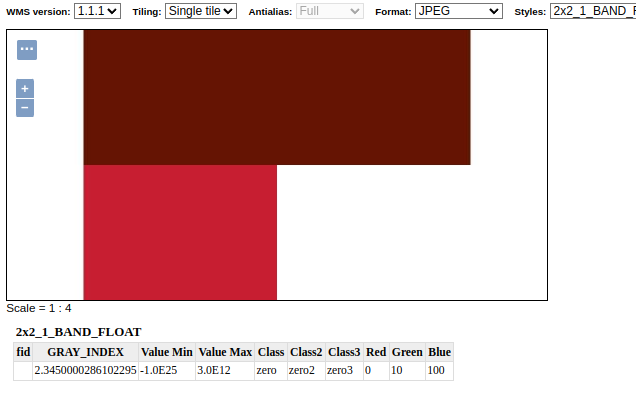
Thanks to Andrea Aime (GeoSolutions) for the development and NOAA for sponsoring this new capability. Please see the user guide Raster Attribute Table support for more information.
- GEOS-11376 Graduate Raster Attribute Table to extension
New Feature:
- GEOS-11267 CSW ISO extension multiple mappings should also have multiple queryable mappings
- GEOS-11376 Graduate Raster Attribute Table to extension
Improvement:
- GEOS-11306 Java 17 does not support GetFeature lazy JDBC count(*)
- GEOS-11311 Show a full stack trace in the JVM stack dump panel
- GEOS-11342 STAC should exclude items when the collection in path is wrong
- GEOS-11359 Update MapML viewer to release 0.13.2
-
GEOS-11369 Additional authentication options for cascaded WMS WMTS data stores - GEOS-11377 RAT module: allow to reload/recompute the RAT
- GEOS-11400 About Page Layout and display of build information
- GEOS-11401 Introduce environmental variables for Module Status page
Bug:
- GEOS-11202 CAS extension doesn’t use global “proxy base URL” setting for service ticket
- GEOS-11236 WFS 2.0.0/GetFeature - Shapefile - “We have had issues trying to flip axis”
- GEOS-11331 OAuth2 can throw a “ java.lang.RuntimeException: Never should reach this point”
- GEOS-11332 Renaming style with uppercase/downcase empty the sld file
- GEOS-11382 The interceptor “CiteComplianceHack” never gets invoked by the Dispatcher Servlet
- GEOS-11385 Demo Requests functionality does not honour ENV variable PROXY_BASE_URL
- GEOS-11392 ConcurrentModificationException while using proxy-base-ext
Task:
- GEOS-11360 Upgrade Apache POI from 4.1.1 to 5.2.5
- GEOS-11362 Upgrade Spring libs from 5.3.32 to 5.3.33
- GEOS-11374 Upgrade Spring version from 5.3.33 to 5.3.34
- GEOS-11375 GSIP 224 - Individual contributor clarification
- GEOS-11388 Update ImageIO-EXT to 1.4.10
- GEOS-11393 Upgrade commons-io from 2.12.0 to 2.16.1
- GEOS-11395 Upgrade guava from 32.0.0 to 33.2.0
- GEOS-11397 App-Schema Includes fix Integration Tests
- GEOS-11402 Upgrade PostgreSQL driver from 42.7.2 to 42.7.3
- GEOS-11403 Upgrade commons-text from 1.10.0 to 1.12.0
- GEOS-11404 Upgrade commons-codec from 1.15 to 1.17.0
For the complete list see 2.25.1 release notes.
Community UpdatesCommunity module development:
- GEOS-11040 Could not get a ServiceInfo for service Features thus could not check if the service is enabled
- GEOS-11330 OAuth2 kid verification should be optional
- GEOS-11339 Introducing the Features Autopopulate Community Plugin
- GEOS-11340 WFS Freemarker HTML Outputformat
- GEOS-11345 STAC Conformance URIs need to be updated to v1.0.0
- GEOS-11348 JMS cluster does not allow to publish style via REST “2 step” approach
- GEOS-11358 Feature-Autopopulate Update operation does not apply the Update Element filter
- GEOS-11381 Error in OIDC plugin in combination with RoleService
- GEOS-11394 OGC APIs cannot handle time extent when the source data type is java.sql.Date
Community modules are shared as source code to encourage collaboration. If a topic being explored is of interest to you, please contact the module developer to offer assistance.
About GeoServer 2.25 SeriesAdditional information on GeoServer 2.25 series:
-
sur GeoServer Team: GeoServer 2.25.1 Release
Publié: 23 May 2024, 2:00am CEST
GeoServer 2.25.1 release is now available with downloads (bin, war, windows), along with docs and extensions.
This is a stable release of GeoServer recommended for production use. GeoServer 2.25.1 is made in conjunction with GeoTools 31.1, and GeoWebCache 1.25.1.
Thanks to Jody Garnett (GeoCat) for making this release.
Security ConsiderationsThis release addresses security vulnerabilities and is considered an essential upgrade for production systems.
See project security policy for more information on how security vulnerabilities are managed.
Raster Attribute Table ExtensionA new extension is available that takes advantage of the GDAL Raster Attribute Table (RAT). This data structure provides a way to associate attribute information for individual pixel values within the raster. This provides a table that links each cell value in the raster to one or more attributes on the fly.


Thanks to Andrea Aime (GeoSolutions) for the development and NOAA for sponsoring this new capability. Please see the user guide Raster Attribute Table support for more information.
- GEOS-11376 Graduate Raster Attribute Table to extension
New Feature:
- GEOS-11267 CSW ISO extension multiple mappings should also have multiple queryable mappings
- GEOS-11376 Graduate Raster Attribute Table to extension
Improvement:
- GEOS-11306 Java 17 does not support GetFeature lazy JDBC count(*)
- GEOS-11311 Show a full stack trace in the JVM stack dump panel
- GEOS-11342 STAC should exclude items when the collection in path is wrong
- GEOS-11359 Update MapML viewer to release 0.13.2
-
GEOS-11369 Additional authentication options for cascaded WMS WMTS data stores - GEOS-11377 RAT module: allow to reload/recompute the RAT
- GEOS-11400 About Page Layout and display of build information
- GEOS-11401 Introduce environmental variables for Module Status page
Bug:
- GEOS-11202 CAS extension doesn’t use global “proxy base URL” setting for service ticket
- GEOS-11236 WFS 2.0.0/GetFeature - Shapefile - “We have had issues trying to flip axis”
- GEOS-11331 OAuth2 can throw a “ java.lang.RuntimeException: Never should reach this point”
- GEOS-11332 Renaming style with uppercase/downcase empty the sld file
- GEOS-11382 The interceptor “CiteComplianceHack” never gets invoked by the Dispatcher Servlet
- GEOS-11385 Demo Requests functionality does not honour ENV variable PROXY_BASE_URL
- GEOS-11392 ConcurrentModificationException while using proxy-base-ext
Task:
- GEOS-11360 Upgrade Apache POI from 4.1.1 to 5.2.5
- GEOS-11362 Upgrade Spring libs from 5.3.32 to 5.3.33
- GEOS-11374 Upgrade Spring version from 5.3.33 to 5.3.34
- GEOS-11375 GSIP 224 - Individual contributor clarification
- GEOS-11388 Update ImageIO-EXT to 1.4.10
- GEOS-11393 Upgrade commons-io from 2.12.0 to 2.16.1
- GEOS-11395 Upgrade guava from 32.0.0 to 33.2.0
- GEOS-11397 App-Schema Includes fix Integration Tests
- GEOS-11402 Upgrade PostgreSQL driver from 42.7.2 to 42.7.3
- GEOS-11403 Upgrade commons-text from 1.10.0 to 1.12.0
- GEOS-11404 Upgrade commons-codec from 1.15 to 1.17.0
For the complete list see 2.25.1 release notes.
Community UpdatesCommunity module development:
- GEOS-11040 Could not get a ServiceInfo for service Features thus could not check if the service is enabled
- GEOS-11330 OAuth2 kid verification should be optional
- GEOS-11339 Introducing the Features Autopopulate Community Plugin
- GEOS-11340 WFS Freemarker HTML Outputformat
- GEOS-11345 STAC Conformance URIs need to be updated to v1.0.0
- GEOS-11348 JMS cluster does not allow to publish style via REST “2 step” approach
- GEOS-11358 Feature-Autopopulate Update operation does not apply the Update Element filter
- GEOS-11381 Error in OIDC plugin in combination with RoleService
- GEOS-11394 OGC APIs cannot handle time extent when the source data type is java.sql.Date
Community modules are shared as source code to encourage collaboration. If a topic being explored is of interest to you, please contact the module developer to offer assistance.
About GeoServer 2.25 SeriesAdditional information on GeoServer 2.25 series:
-
sur Camptocamp: Camptocamp Sponsors Two PostgreSQL Events in June: pgday.fr and pgday.ch
Publié: 23 May 2024, 2:00am CEST
Pièce jointe: [télécharger]
As a company committed to supporting our clients in deploying, optimizing, monitoring, securing, and utilizing PostgreSQL, we have decided to extend our support to the PostgreSQL community by sponsoring these conferences at the "supporters" level. -
sur Camptocamp: Camptocamp Sponsors Two PostgreSQL Events in June: pgday.fr and pgday.ch
Publié: 23 May 2024, 2:00am CEST
Pièce jointe: [télécharger]
As a company committed to supporting our clients in deploying, optimizing, monitoring, securing, and utilizing PostgreSQL, we have decided to extend our support to the PostgreSQL community by sponsoring these conferences at the "supporters" level. -
sur Camptocamp: Camptocamp Sponsors Two PostgreSQL Events in June: pgday.fr and pgday.ch
Publié: 23 May 2024, 2:00am CEST
Pièce jointe: [télécharger]
As a company committed to supporting our clients in deploying, optimizing, monitoring, securing, and utilizing PostgreSQL, we have decided to extend our support to the PostgreSQL community by sponsoring these conferences at the "supporters" level. -
sur Camptocamp: Camptocamp Sponsors Two PostgreSQL Events in June: pgday.fr and pgday.ch
Publié: 23 May 2024, 2:00am CEST
Pièce jointe: [télécharger]
As a company committed to supporting our clients in deploying, optimizing, monitoring, securing, and utilizing PostgreSQL, we have decided to extend our support to the PostgreSQL community by sponsoring these conferences at the "supporters" level.
-
sur Registrations Open for OGC’s July 2024 Open Standards Code Sprint
Publié: 22 May 2024, 3:00pm CEST par Simon Chester
The Open Geospatial Consortium (OGC) invites developers and other contributors to the July 2024 Open Standards Code Sprint, to be held from July 10-12 in London and online. Participation is free and open to the public, with travel support funding available to select participants. Sponsorship opportunities are also available.
The Code Sprint is sponsored by OGC Principal Member Google at the Silver Level, with additional Strategic Member support from Natural Resources Canada (NRCan).
This will be a collaborative and inclusive event to support the development of open Standards and applications that implement those Standards. All OGC Standards are in scope for this Code Sprint, including OGC API Standards. The Sprint will feature three special tracks on Data Quality & Artificial Intelligence, Validators, and the Map Markup Language (MapML).
OGC Code Sprints experiment with emerging ideas in the context of geospatial Standards and help improve interoperability of existing Standards by experimenting with new extensions or profiles. They are also used for building proofs-of-concept to support standards development activities and the enhancement of software products.
Non-coding activities such as testing, working on documentation, or reporting issues are welcome during the Code Sprint. OGC Sprints also provide an opportunity to onboard developers that are new to OGC Standards, through the sprints’ mentor streams.
Organizations are invited to sponsor the Code Sprint. A range of packages are available offering different opportunities for organizations to support the geospatial development community while promoting their products or services. Visit the Event Sponsorship page for more information.
A one-hour pre-event webinar will take place at 14:00 BST (UTC+1) on June 13. The webinar will outline the scope of work for the Code Sprint and provide an overview of the specifications that will be its focus. The pre-event webinar will take place on OGC’s Discord server.
Travel Support Funding is available for selected participants. Participants interested in receiving travel support funding should indicate their interest on the registration form. Any participant applying for funding will need to submit their registration form by June 30. Applicants will be notified within 2 weeks of their application whether travel support will be available to them or not.
The code sprint will begin with an onboarding session at 09:00 (UTC+1) on July 10, and ends at 17:00 (UTC+1) on July 12. Registration for in-person participation closes at 17:00 (UTC+1) on July 3. Registration for remote participation will remain open throughout the Code Sprint.
Registration is available on the July 2024 Code Sprint website. To learn more about future and previous OGC code sprints, visit the OGC Developer Events Wiki, the OGC Code Sprints Website, or join OGC’s Discord server.
The post Registrations Open for OGC’s July 2024 Open Standards Code Sprint appeared first on Open Geospatial Consortium.
-
sur Fernando Quadro: Geoprocessamento na Saúde
Publié: 22 May 2024, 2:00pm CEST
A localização de eventos de saúde no espaço geográfico com base em mapas não é recente. Em 1854, o médico John Snow investigou no bairro de Soho, em Londres, um surto de cólera. Ele mapeou com base nos croquis dos quarteirões, as casas atingidas e relacionou com as pessoas que beberam água de uma fonte na Broad Street.
Logo, percebeu que aquele surto em particular ocorrera em torno de uma bomba de água compartilhada que a maioria dos habitantes usava para coletar água para beber e lavar. Essa foi a primeira vez que um mapa foi usado para melhor compreensão de uma doença e estabelecer medidas de controle.
Várias são as possibilidades do uso do geoprocessamento na saúde:
 Serviços de saúde,
Serviços de saúde,
 Saúde ambiental,
Saúde ambiental,
 Epidemiologia de doenças crônicas não transmissíveis,
Epidemiologia de doenças crônicas não transmissíveis,
 Epidemiologia de doenças transmissíveis,
Epidemiologia de doenças transmissíveis,
 Identificação de áreas de risco,
Identificação de áreas de risco,
 Entre outros…
Entre outros…A melhora e o aumento na disponibilidade de bases de dados e dos SIG trouxeram ganhos importantíssimos para aplicação do geoprocessamento na área da saúde. Podemos citar os Sistemas de Informação em Saúde que abarcam dados sobre nascimentos, óbitos e doenças de notificação compulsória, entre eles:
 Sistema de Informação de Mortalidade (SIM),
Sistema de Informação de Mortalidade (SIM),
 Sistema de Nascidos Vivos (SINASC) ,
Sistema de Nascidos Vivos (SINASC) ,
 Sistema de Informação de Agravos de Notificação (SINAN).
Sistema de Informação de Agravos de Notificação (SINAN). As possibilidades de técnicas disponíveis em SIGs robustos, permitem análises que são úteis na identificação de áreas de risco para determinados agravos, bem como na análise destes que busquem relação com variáveis ambientais extraídas de informações sobre uso e ocupação do solo ou de variáveis climáticas, extraídas de produtos de sensoriamento remoto e de métodos de reanálise para o monitoramento climático; ou na combinação de variáveis, ambientais, climáticas socioeconômicas a partir do uso de modelos estatísticos espaciais que permite tratar a heterogeneidade espacial e espaço temporal, levando em conta tanto a vizinhança (a dependência espacial) como a existência de estruturas hierárquicas de dados em questão.
Em resumo, a aplicação do geoprocessamento e das técnicas de análise espacial associadas ao acesso livre e gratuito de SIGs e de inúmeras fontes de dados, vem abrindo oportunidades de uso na área de saúde pública, não somente para pesquisadores em seus estudos, mas especialmente para os profissionais que atuam na área da saúde.
Gostou desse post? Conte nos comentários

-
sur Mappery: Antoine de Saint Exupery by C215
Publié: 22 May 2024, 11:00am CEST
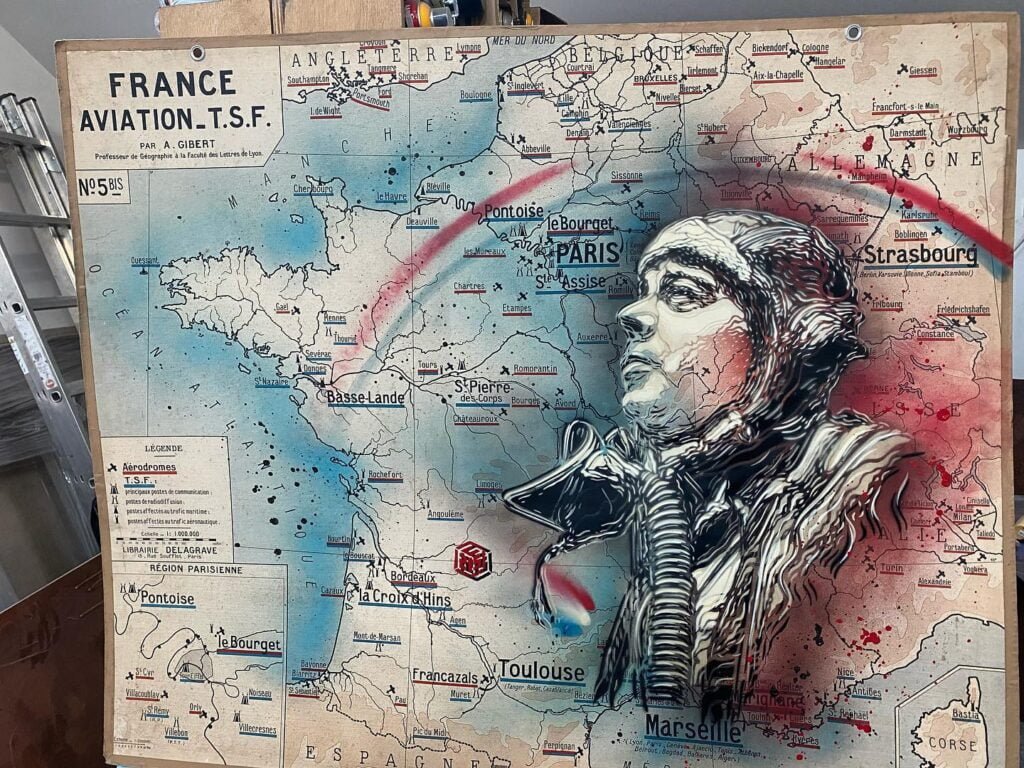
French author Antoine de Saint-Exupéry, known for “The Little Prince,” soars over his homeland on a vintage map of France. Where will imagination take you today?
C215, Christian Guemy Website : c215.fr
MapsintheWild Antoine de Saint Exupery by C215
-
sur It's War on the Streets of Paris
Publié: 22 May 2024, 8:37am CEST par Keir Clarke
Une Histoire de Rue is a new interactive map which explores the connections between Paris street names and military history. Around 15% of Paris' streets have names which are related to battles, soldiers and/or resistance fighters. This new interactive map allows you to quickly see the extent to which military history is reflected and commemorated in the names of Paris' roads.On the map streets
-
sur Camptocamp: NexSIS - the Go Live!
Publié: 22 May 2024, 2:00am CEST
Pièce jointe: [télécharger]
At the start of the NexSIS project in 2019, the Digital Agency for Civil Security (ANSC) chose to entrust the development of the cartographic features of its applications to the teams at Camptocamp. -
sur Camptocamp: NexSIS - the Go Live!
Publié: 22 May 2024, 2:00am CEST
Pièce jointe: [télécharger]
At the start of the NexSIS project in 2019, the Digital Agency for Civil Security (ANSC) chose to entrust the development of the cartographic features of its applications to the teams at Camptocamp. -
sur Fernando Quadro: Curso Combo PostgreSQL, PostGIS e GeoServer
Publié: 21 May 2024, 2:00pm CEST
Neste mês de maio a Geocursos está com inscrições abertas para seu Curso Combo com PostgreSQL, PostGIS e GeoServer, uma formação completa, saindo do zero em banco de dados (PostgreSQL/PostGIS), passando pela linguagem SQL, análises espaciais no PostGIS até a publicação completa de seus mapas na internet com o GeoServer.
O mercado de trabalho está cada vez mais competitivo, e o conhecimento em banco de dados (PostgreSQL/PostGIS) e servidor de mapas (GeoServer) tem sido cada vez mais um pré-requisito para qualquer profissional na área do Geoprocessamento.
Pensando nisso, a Geocursos está disponibilizando um cupom de R$ 270 reais de desconto pra você, basta ir no nosso WhatsApp e dizer “QUERO DESCONTO“.
 Você ficou interessado?
Você ficou interessado? -
sur Mappery: Africa Lion by C215
Publié: 21 May 2024, 11:00am CEST
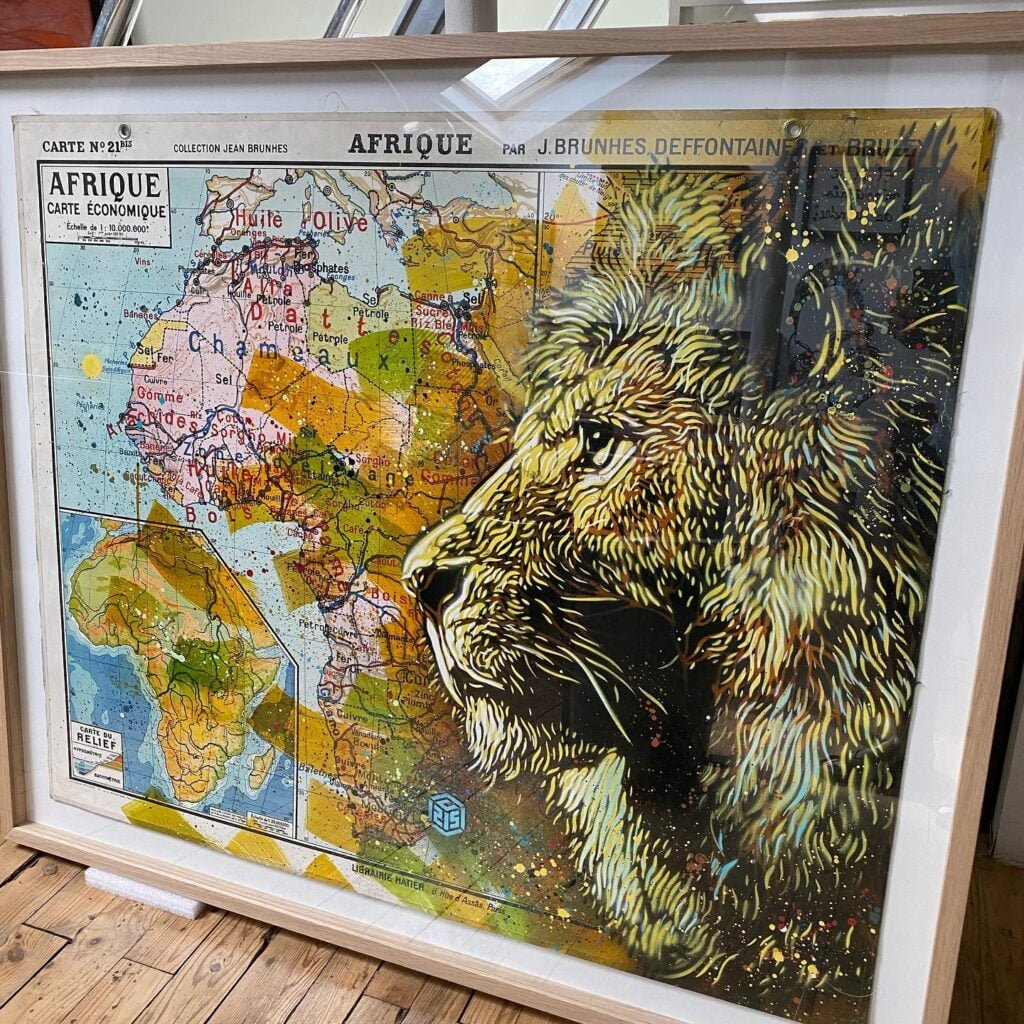
For our second episode, I chose this powerful image of a lion standing proudly over a map of Africa. It evokes the continent’s rich wildlife and the lion’s reign as the apex predator in the savannas and grasslands.
C215, Christian Guemy’s English website c215.fr
MapsintheWild Africa Lion by C215
-
sur 99 Red Balloons Go By
Publié: 21 May 2024, 8:11am CEST par Keir Clarke
Reuters reports that since December China has sent more than 100 balloons over Taiwan, often passing through air corridors used by civilian aircraft. It is unknown what the balloons are being used for, they could be weather balloons, but many suspect that they are being used to spy on Taiwan.You may remember that in February last year many Americans became enraged by the presence of a Chinese
-
sur Free and Open Source GIS Ramblings: New Trajectools 2.1 and MovingPandas 0.18 releases
Publié: 20 May 2024, 5:07pm CEST
Today marks the 2.1 release of Trajectools for QGIS. This release adds multiple new algorithms and improvements. Since some improvements involve upstream MovingPandas functionality, I recommend to also update MovingPandas while you’re at it.

If you have installed QGIS and MovingPandas via conda / mamba, you can simply:
conda activate qgis mamba install movingpandas=0.18Afterwards, you can check that the library was correctly installed using:
import movingpandas as mpd
mpd.show_versions()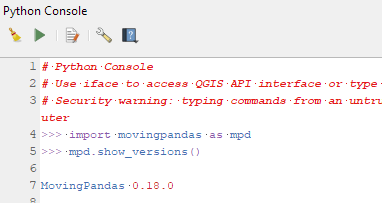 Trajectools 2.1
Trajectools 2.1
The new Trajectools algorithms are:
- Trajectory overlay — Intersect trajectories with polygon layer
- Privacy — Home work attack (requires scikit-mobility)
- This algorithm determines how easy it is to identify an individual in a dataset. In a home and work attack the adversary knows the coordinates of the two locations most frequently visited by an individual.
- GTFS — Extract segments (requires gtfs_functions)
- GTFS — Extract shapes (requires gtfs_functions)
- These algorithms extract public transport routes (GTFS shapes) and route segments between stops (GTFS segments) from GTFS ZIP files using gtfs_functions.Feed.shapes and .segments, respectively.
Furthermore, we have fixed issue with previously ignored minimum trajectory length settings.


Scikit-mobility and gtfs_functions are optional dependencies. You do not need to install them, if you do not want to use the corresponding algorithms. In any case, they can be installed using mamba and pip:
MovingPandas 0.18mamba install scikit-mobility pip install gtfs_functionsThis release adds multiple new features, including
- Method chaining support for add_speed(), add_direction(), and other functions
- New TrajectoryCollection.get_trajectories(obj_id) function
- New trajectory splitter based on heading angle
- New TrajectoryCollection.intersection(feature) function
- New plotting function hvplot_pts()
- Faster TrajectoryCollection operations through multi-threading
- Added moving object weights support to trajectory aggregator


-
sur Spreading Love & Peace in Nutopia
Publié: 20 May 2024, 11:13am CEST par Keir Clarke
Nutopia is a conceptual country which was created by John Lennon and Yoko Ono in 1973 as a form of artistic expression and social commentary. Nutopia was created to be a utopian country with no land, no borders, and no passports, symbolizing an idea of peace and global citizenship.The country of Nutopia has a white flag, symbolizing its surrender to peace, and its national anthem is a few



